#Bert Granet
Explore tagged Tumblr posts
Text

Day 18- Film: The Marrying Kind
Release date: Mar 13th
Studio: Columbia
Genre: Comedy
Director: George Cukor
Producer: Bert Granet
Actors: Judy Holliday, Aldo Ray, Madge Kennedy
Plot Summary: Florence and Chet have been married for seven years, but they are now sitting in divorce court making their case before a judge. They recount the trials and tribulations of their marriage as the wise judge listens.
My Rating (out of five stars): **½
I’m kind of torn about this one. There were some things I really liked about it, but other things that just didn’t work.
The good:
Aldo Ray. The film took great pains to let us know that this was his debut- at the beginning and the end!- but I found him very charming. He had a great “everyman” kind of quality, even if he sometimes pushed the “dumb” button a little too hard.
Judy Holliday- I've loved her since I saw Adam’s Rib in high school. She’s very good at being really funny and emotionally affecting at the same time.
The detail of everyday life- These characters were not extraordinary in any way. They were average simple people living average simple lives. I even liked that they looked that way too. Both actors are good looking people, but they aren’t classically gorgeous movie star types.
I like when marriage comes near the beginning of a movie rather than at the end. Most movies, especially at this time, made marriage the gold pot at the end of the rainbow. I like getting the stories of couples after the "happy ending."
The bad:
The whole thing was rather predictable right from the first scene. We have a seemingly likeable couple sitting before a judge in divorce court, and they start recounting the story of their lives together. We all know exactly where this will end up.
The shocking moment of tragedy about 2/3 of the way in just did not work for me. At first (spoiler alert!) the death of their son was extremely emotionally upsetting to watch. But from then on, it felt like it just became a plot point. Some terrible hardship had to be added to their lives to get them from plot point a to plot point z. But the actual reality of suddenly and tragically losing a young son seemed to get lost. That’s where I struggled to stay engaged and invested in the story.
The writing overall was just missing some “zing.” It could too often be pedestrian.
0 notes
Text
K.O. KITTY
“The Westinghouse Desilu Playhouse” ~ November 17, 1958
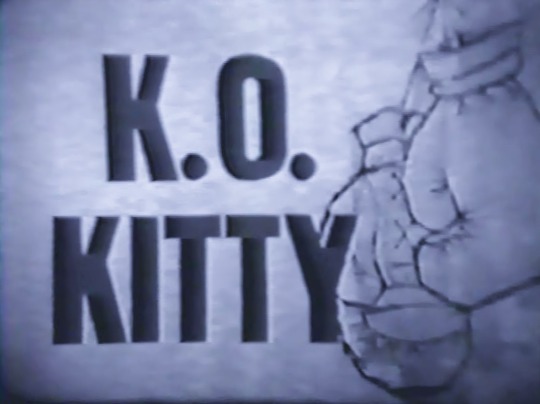
Produced by Bert Granet, Quinn Martin
Directed by Jerry Thorpe
Dances and Fights staged by Jack Baker
Written by Bob Carroll, Madelyn Davis, Quinn Martin (story)
Synopsis: Los Angeles dance teacher Kitty (Lucille Ball) is delighted when she learns that she has inherited a boxer from her late Uncle Charlie. But the boxer turns out not to be a canine, but a prize fighter named Harold Tibbetts (Aldo Ray), a muscle-bound country boy.
Cast
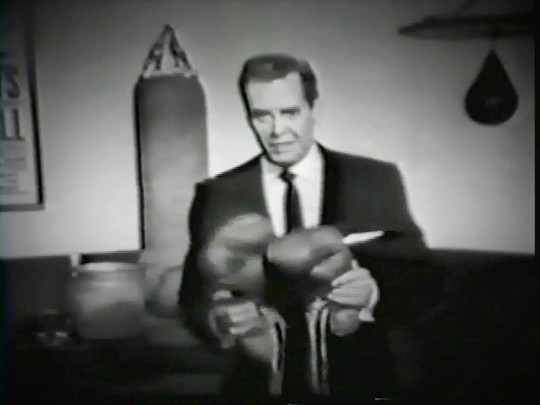
Desi Arnaz (Himself, Host) was born in Cuba in 1917 and immigrated to America as a youngster. He was a musician who married Lucille Ball in 1940 after meeting her on the set of 1939’s Too Many Girls, which he had done on stage in New York. In order to keep him ‘off the road’ Ball convinced producers to cast him as her husband in a new television project based on her radio show “My Favorite Husband.” The network was convinced. In 1951, Arnaz and Ball began playing Lucy and Ricky Ricardo, roles they would be identified with for the rest of their lives. The couple had two children together, Lucie and Desi Jr. In 1960, Ball and Arnaz divorced. Desi became a producer, responsible for such hits as “The Mothers-in-Law” (1967-69). He re-married in 1963. Desi Aranz died in 1986, just a few years before Ball.
Lucille Ball (Kitty Winslow) was born on August 6, 1911 in Jamestown, New York. She began her screen career in 1933 and was known in Hollywood as ‘Queen of the B’s’ due to her many appearances in ‘B’ movies. With Richard Denning, she starred in a radio program titled “My Favorite Husband” which eventually led to the creation of “I Love Lucy,” a television situation comedy in which she co-starred with her real-life husband, Latin bandleader Desi Arnaz. The program was phenomenally successful, allowing the couple to purchase what was once RKO Studios, re-naming it Desilu. When the show ended in 1960 (in an hour-long format known as “The Lucy-Desi Comedy Hour”) so did Lucy and Desi’s marriage. In 1962, hoping to keep Desilu financially solvent, Lucy returned to the sitcom format with “The Lucy Show,” which lasted six seasons. She followed that with a similar sitcom “Here’s Lucy” co-starring with her real-life children, Lucie and Desi Jr., as well as Gale Gordon, who had joined the cast of “The Lucy Show” during season two. Before her death in April 1989, Lucy made one more attempt at a sitcom with “Life With Lucy,” also with Gordon, which was not a success and was canceled after just 13 episodes.
Most sources list Kitty's surname as ‘Williams.’ Her last name is clearly spoken twice in the teleplay as ‘Winslow.’
Aldo Ray (Harold Tibbetts, below center) was born as Aldo DeRe and nicknamed 'the Rugged Romeo'. In 1964 he worked again with Lucille Ball in Bob Hope's “Have Girls, Will Travel” (1964). His career waned in the 1970s. He died in 1991.
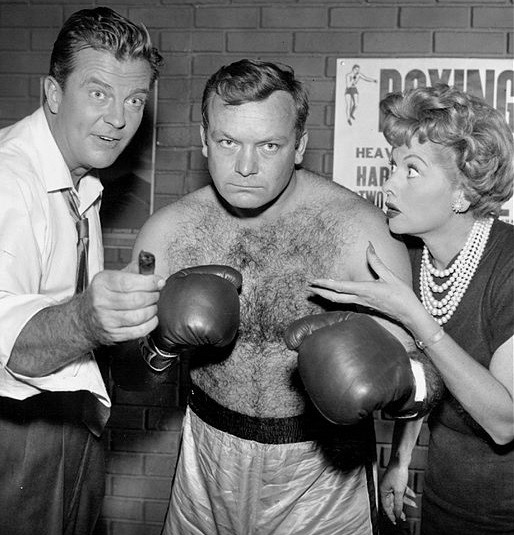
William Lundigan (David Pierce, above left) was a genial 'B' movie and TV actor. His career began in 1937. His last television role was in 1971. He was a good friend of William Frawley (Fred Mertz) and served as pallbearer at his funeral. Lundigan died in 1975.
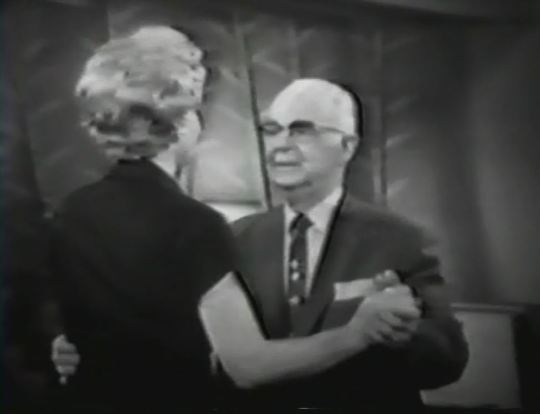
Harry Cheshire (Mr. Brubaker) did three films with Lucille Ball between 1947 and 1950. He played Sam Johnson, a Texan who sells Lucy and Ricky “Oil Wells” (ILL S3;E18) in 1954. His best-known role was as Judge Ben Wiley in the TV series “Buffalo Bill, Jr.” (1955). He died in 1968 at the age of 76.
Jesse White (Barney Snyder, below right) is probably best remembered for playing the lonely Maytag repairman on TV commercials airing from 1967 to 1988. A busy character actor, White subsequently starred opposite Lucille Ball on a 1972 episode of “Here's Lucy.” He died in 1997.
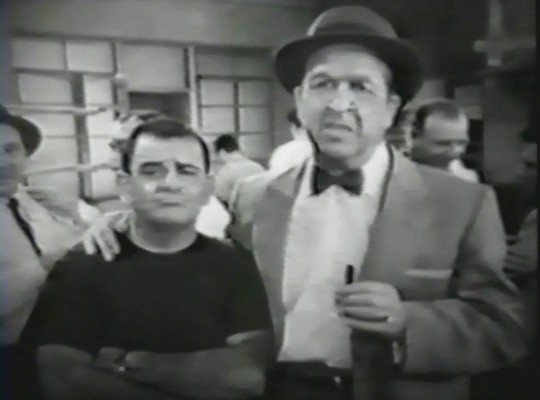
Sid Melton (Louie, above left) also appeared on the “Westinghouse Desilu Playhouse” as a bellboy in “Lucy Goes to Alaska” (February 1959) and as a construction worker in “Milton Berle Hides Out at the Ricardos” (September 1959). He played one of the jockeys in “Lucy Wins a Racehorse” (February 1958). He later played Charley Halper on "Make Room For Daddy” (filmed at Desilu) and Alf Monroe on "Green Acres” (aired on CBS).
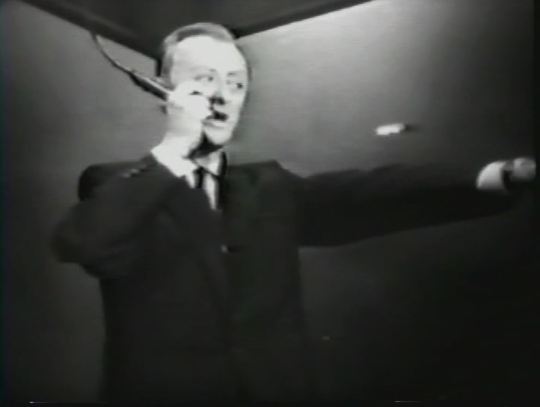
Frankie Van (Himself, Referee) was a stand-in and background performer whose more than 50 credits are nearly all as referees in films and television shows about boxing. Fittingly, his last screen credit was as a referee in Rocky (1976).
In this script, Van is called by his real name.
Freddie Beshore (Tommy Thompson, uncredited) picked up boxing while serving in the United States Navy during World War II. During his career he was the Heavyweight Champion of the Pacific Coast. During the late 1940s and early 1950s he was a top heavyweight title contender.
Norman Leavitt (Policeman, uncredited) appeared with Lucille Ball in the 1950 film A Woman of Distinction as well as The Long, Long Trailer (1953). The character actor also appeared on three episodes of “The Lucy-Desi Comedy Hour” and two episodes of “The Lucy Show.”
About “The Westinghouse Desilu Playhouse”
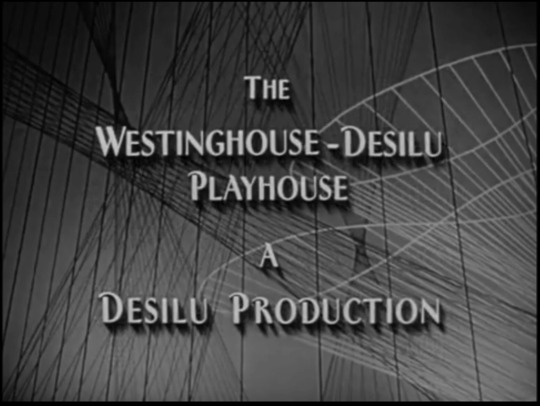
After the end of the half-hour “I Love Lucy” episodes, Desi Arnaz convinced CBS to purchase an anthology series titled “Desilu Playhouse” which would feature different hour-long dramas every week along with monthly stories of the Ricardos and the Mertzes, something begun a year before.
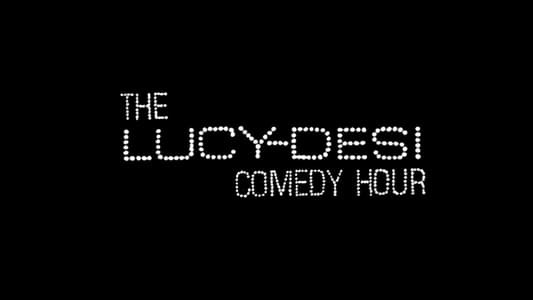
Thirteen hour-long “I Love Lucy” adventures were eventually made and sold to syndication as “The Lucy-Desi Comedy Hour,” ten of which were produced under the Westinghouse sponsorship. The appliance company paid a then-record 12 million dollars to sponsor the show.
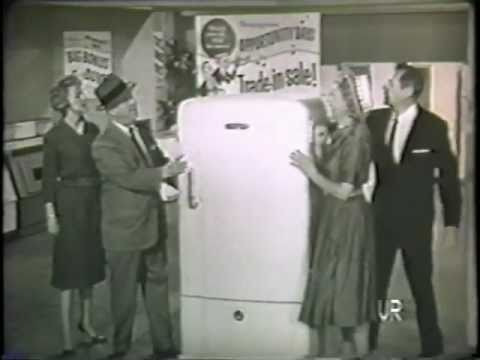
Desi Arnaz hosted the show and introduced the stories. Desi, Lucy, Vivian Vance, and William Frawley, were often involved in the lengthy studio-filmed commercials, with Betty Furness spokesperson for the Westinghouse products. Although it wasn't around long, the show gave birth to pilots for “The Untouchables” and “The Twilight Zone.”

In the summer of 1958, in anticipation of their partnership, the cast of “I Love Lucy” played themselves in an industrial film (known as “Lucy Buys Westinghouse”) that toured the Desilu Studios, promoted “Lucy Goes to Mexico”, and highlighted Westinghouse appliances. The film was never in theatrical release or broadcast, but only shown Westinghouse dealers and corporate clients.
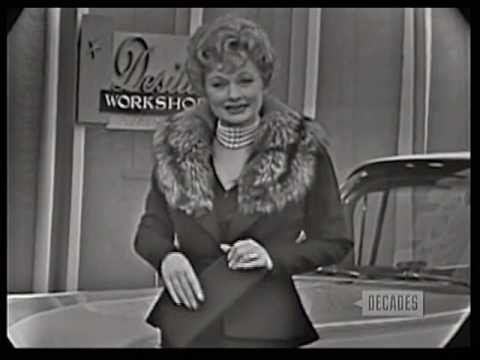
The Desilu Playhouse was also an actual little theatre on the Desilu backlot which hosted classes for actors and put on workshop shows for agents and industry insiders. When Lucille Ball joined RKO in the 1930s, the program was headed by Ginger Rogers' mother, Lela. Lucy wanted to continue the tradition. It was depicted in both “The Desilu Revue” (December 25, 1959) and “Hedda Hopper's Hollywood” (January 10, 1960).
About “K.O. Kitty”
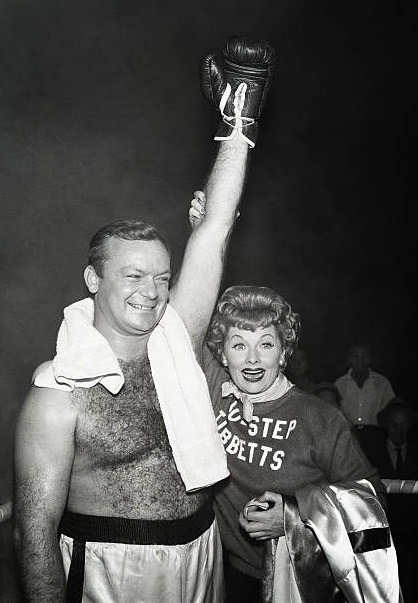
In the title, “K.O” is boxing term short for “Knock Out,” when a fighter has hit his opponent so hard that he hits the mat and cannot get up again.
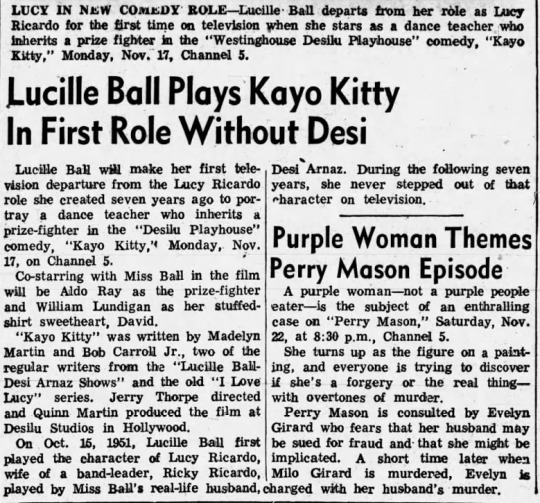
This is the first time that Lucille Ball acted on television not playing Lucy Ricardo. Lucille Ball was supposed to do several more non-Lucy Ricardo roles on the series, but this was the only one that ever materialized. The series ended in 1960, along with the Arnaz marriage. “The Desilu Playhouse” went into syndication, minus the Lucy-Desi Comedy Hours. In 1962, Desilu sold those 13 shows back to CBS for $750,000.
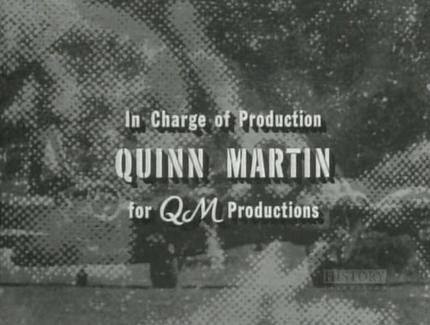
Quinn Martin (Producer / Story) was married to “Lucy” writer Madelyn Pugh Davis from 1955 to 1960. His production company was later responsible for such hits as “The Streets of San Francisco” (1972-77), “The Fugitive” (1963-67), and “Barnaby Jones” (1973-78) earning him four Emmy nominations. He also produced nine other episodes of “The Westinghouse Desilu Playhouse.”
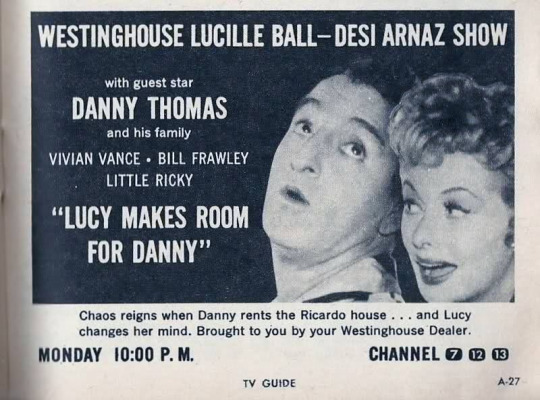
Like “I Love Lucy” and “The Lucy-Desi Comedy Hour,” the episode uses a laugh track. Unlike most of those shows, there was no studio audience. “K.O. Kitty” followed “Lucy Goes to Mexico” (October) and was followed by “Lucy Makes Room for Danny” (December), a cross-over episode with “Make Room for Daddy.”
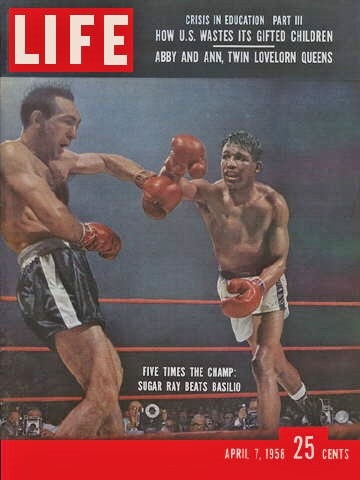
Earlier in 1958, boxing made the cover of Life Magazine when Sugar Ray Leonard beat Carmen Basilio.
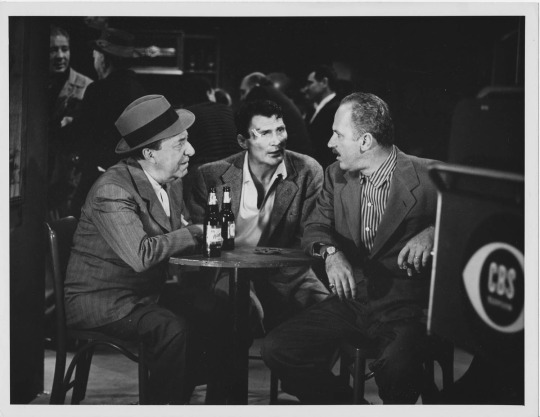
Boxing had been a major attraction on television, the highlight being the “Playhouse 90” presentation of “Requiem for a Heavyweight” in 1956 on CBS. It was directed by Rod Serling (”The Twilight Zone”) and starred Jack Palance.

A country boy out of his element, Harold Tibbetts (Aldo Ray) is reminiscent of when Tennessee Ernie Ford visited the Ricardos on “I Love Lucy.” Like Cousin Ernie, Harold has an enormous appetite and can't return home because he has no money. He also tends to speak with homespun wit.
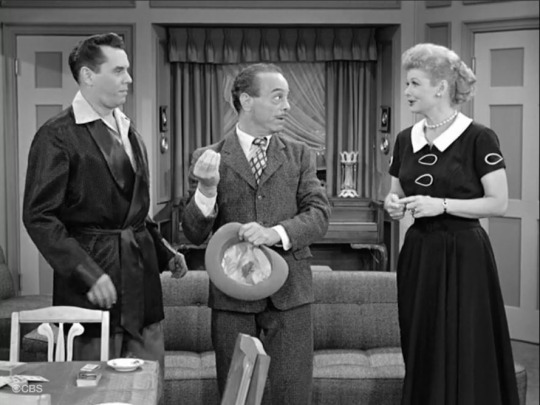
Harold also resembles another visitor to the Ricardo apartment, Mario (Jay Novello), the “Visitor From Italy” (ILL S6;E5). Like Harold, Mario had no cash to and had to go to work – in his case making pizza.
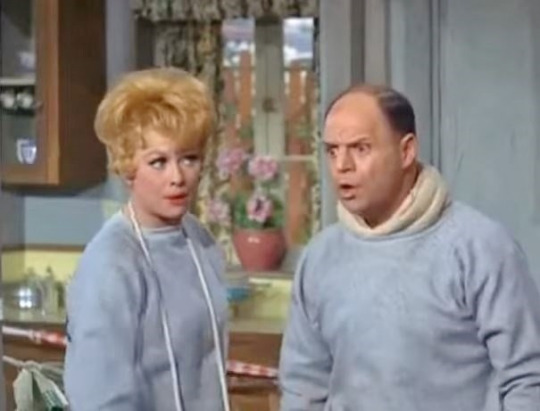
But “K.O. Kitty” most closely resembles a 1967 episode of “The Lucy Show” titled “Lucy, the Fight Manager” (TLS S5;E20) starring Don Rickles as a washed-up boxer named Eddie who Lucy Carmichael decides to train at home. Lucy dubs herself 'Killer Carmichael' and even jumps rope in tandem with Eddie, a stunt she learned to do for “K.O. Kitty.” Despite being by different writers, both scripts contain characters named Louie.
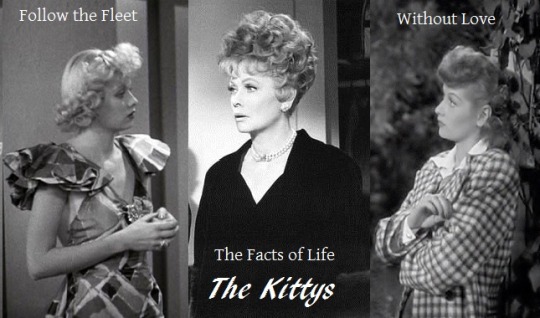
Lucille Ball also played characters named Kitty in the films Follow the Fleet (1936), Without Love (1945), and The Facts of Life (1960). A name featuring two-syllables ending with 'y' made reminded the listener of 'Lucy'.
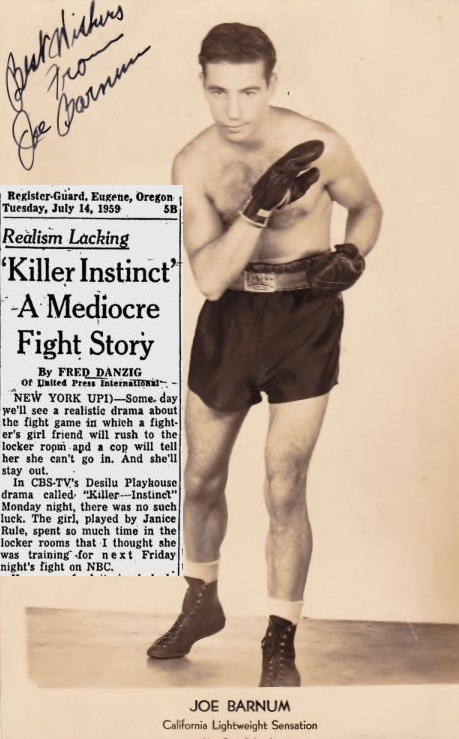
Eight months later “The Westinghouse Desilu Playhouse” did another story about prizefighting titled “The Killer Instinct” starring Rory Calhoun and Janice Rule. It was based on the career of ex-boxer Joe Barnum.
The Episode
Desi Arnaz introduces the program, noting that it is a special episode because it stars “his favorite redhead” Lucille Ball.
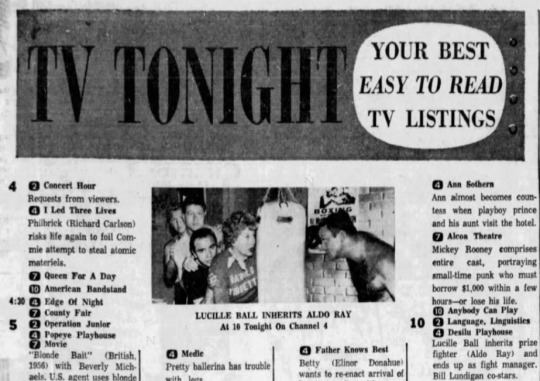
The story opens with Kitty at work, teaching dance. She is trying to get Mr. Brubaker (Harry Cheshire) to do the Cha-Cha.
Kitty: “Your feet are doing the cha-cha-cha but your hips are back in the rumba class.”

During the dance lesson, we learn that Kitty is engaged to an up-and-coming lawyer named David (William Lundigan) who won't marry her until he gets a partnership in his law firm, Abbott Parker and Jones. She tells Mr. Brubaker that he is dancing with an 'heiress' due to her Uncle Charlie dying and leaving her a diamond stick-pin, a gold pocket watch, and a dog – a boxer, to be precise.
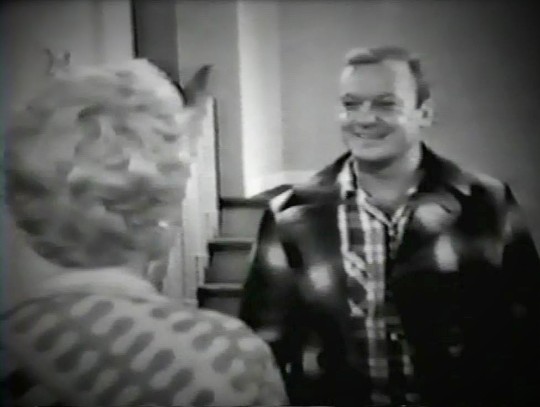
David (William Lundigan) tells Kitty he is going away on a business trip to San Francisco for a week. During their romantic dinner, there is a knock on the door and the boxer arrives – Harold Tibbetts, professional prize fighter. Tibbetts admits he's not really from Ogalala, Nebraska, but from Crockett – just “a hoot and holler” away.
Harold: “I'm so hungry, my stomach's a-growlin' like hound dog's just smelled a weasel in a hen house.”
Overcome with a sense of loyalty to her Uncle Charlie, Kitty agrees to manage Harold. She arranges for Harold to fight the impressive Tommy Thompson, a powerhouse that no one wants to go up against. Kitty cannot afford the gym fees so trains him at her apartment.
The name Tommy Thompson was also the name of a producer who worked extensively with Lucille Ball starting in 1964. In 1958 he was on the Desilu lot working as assistant director on “The Danny Thomas Show”
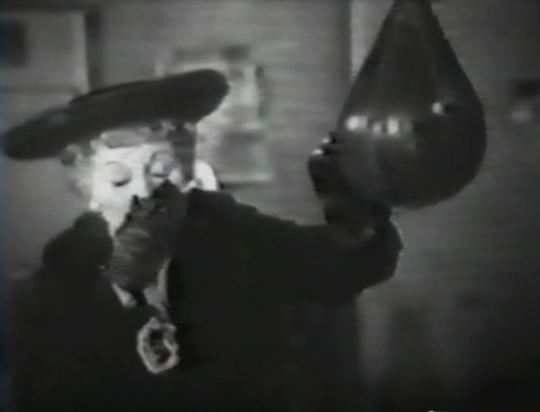
Kitty sends Harold off to the store to buy training supplies while she stays behind at the gym to observe and pick up some pointers on boxing. First, she indulges in a little shadow boxing. Next she tries to use a punching bag, but it punches back – right in her face. Remembering how to jump rope from her childhood, she jumps into a boxer's reps keeping time with a schoolyard rhyme. These are all prime opportunities for Lucille Ball to indulge in some of her well-hone physical comedy skills.
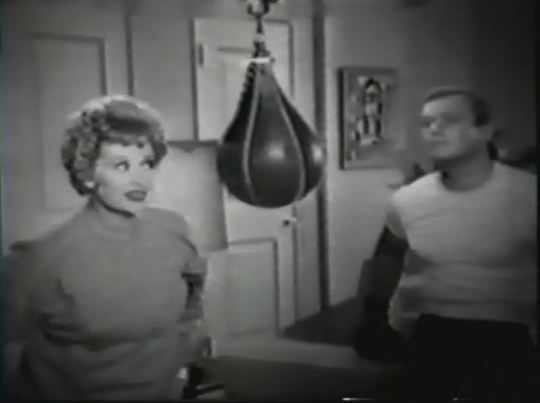
Back at the apartment, there is a montage of scenes of Kitty training Harold. He knocks the punching bag out the window, shatters a mirror while shadow boxing, and crashes to the floor while jumping rope. Kitty decides that the best training for klutzy Harold would be dancing lessons.
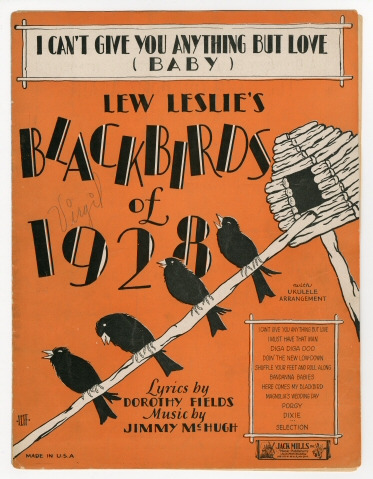
They begin lessons by dancing to “I Can't Give You Anything But Love, Baby” by Jimmy McHugh and Dorothy Fields. The song was introduced on Broadway in Blackbirds of 1928.
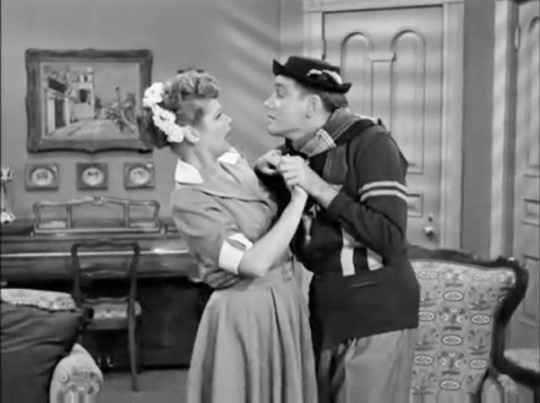
The dance lesson scene is nearly identical to when Lucy Ricardo taught awkward Arthur Morton (Richard Crenna) to dance in “The Young Fans” (ILL S1;E20) in 1952.
David returns unexpectedly from San Francisco to find Kitty and Harold in a carefree clinch. Kitty attempts to explain what is going on but it devolves into an argument and David storms out.

Using Kitty's dance steps and her singing “I Can't Give You Anything But Love” from ringside as inspiration, Harold surprisingly wins his bout against Tommy Thompson.

He then wins a second fight.

And a third!
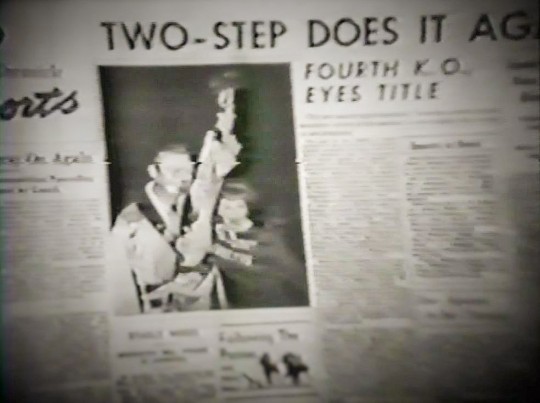
With a fourth K.O. under his belt thanks to Kitty, he eyes the title!
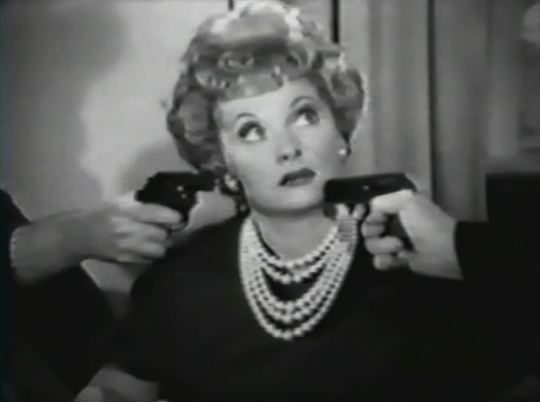
Barney Snyder (Jesse White) and David conspire to get Kitty out of the fight game – for both their sake. Snyder and Louie (Sid Melton) show up at Kitty's apartment, guns drawn, to convince Lucy that they are crooks, and that the fight is fixed.
Meanwhile, back at the gym, 'Two Step Tibbetts' (as he's now called) is waiting for Kitty to arrive knowing he can't win the fight without her singing ringside while he spars. David arrives to tell Harold the bad news that Kitty will be detained. He learns from Harold that earlier that day they decided that this would be his last fight. David offers to sing instead of Kitty, but Harold can't remember the name of the song – except that the word 'love' was in the title.

Still at gunpoint, Kitty watches the match from home on TV. When Barney and Louis become engrossed in the fight, Kitty hides in the closet. This is very reminiscent of “Ricky and Fred are TV Fans” (ILL S2;E30) where Lucy and Ethel manage to evade the police when they can't take their eyes off a televised boxing match.
Meanwhile, back at the ring, Harold is taking a beating while David rattles off the title of every 'love' song he can think of, including a few bars of “I Love You Truly,” a traditional wedding song.
Barney and Louis confess to Kitty that they made up their story about being mobsters. Their guns are actually cigarette lighters! They spill the beans to Kitty about their plans. In order to get to the stadium as fast as possible, Kitty pretends she's going to have a baby and gets a police escort. Kitty and David rush to the ringside in time to sing the song, which everyone in the stadium joins in. At the final moment, Harold lands a knock out punch and wins the fight. David and Kitty make-up with a kiss as the program ends.
Ringside With Lucy
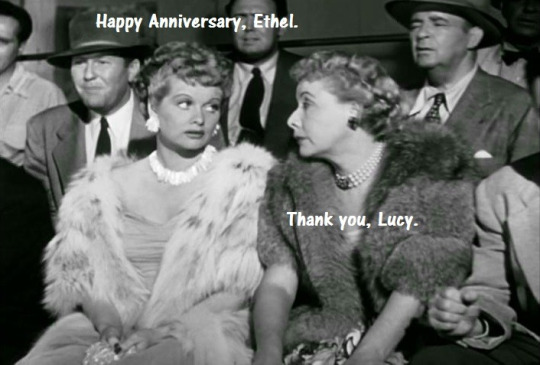
Lucy Ricardo and Ethel Mertz ended up at the fights in the last scene of 1951’s “The Girls Want to Go to a Nightclub” (ILL S1;E1), the very first “I Love Lucy” episode ever aired.
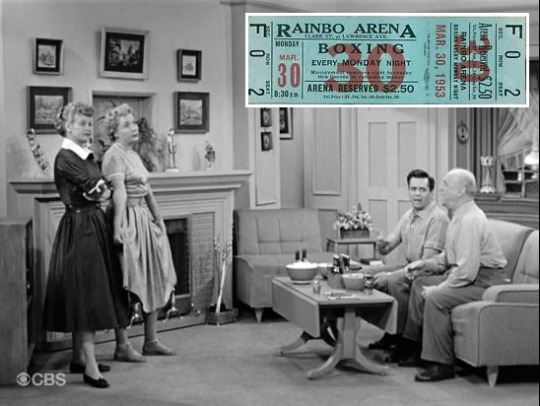
Everyone but Lucy and Ethel seem to be watching the fights on television in “Ricky and Fred are TV Fans” (ILL S2;E30).
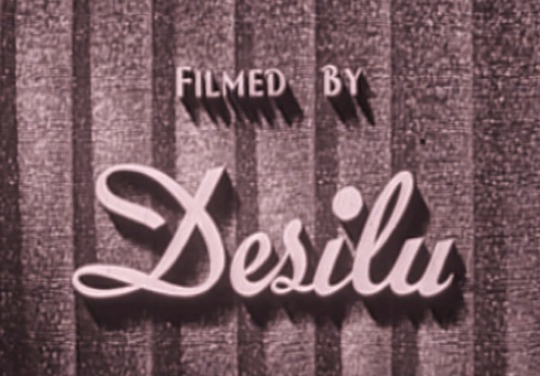
This Date in Lucy History ~ November 17
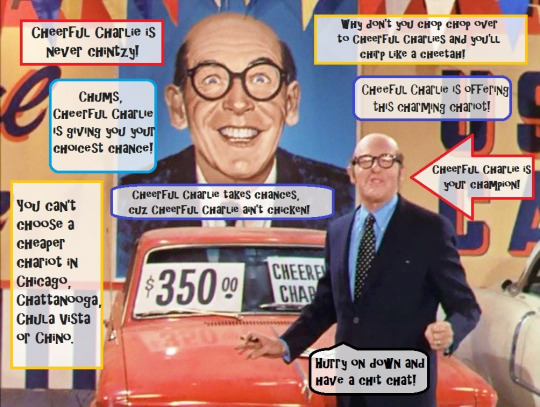
"Lucy and the Used Car Dealer" (HL S2;E9) ~ November 17, 1969
#K.O. Kitty#Lucille Ball#The Westinghouse Desilu Playhouse#Westinghouse#Desilu#Boxing#Aldo Ray#William Lundigan#Desi Arnaz#Bert Granet#Quinn Martin#Jack Baker#Jerry Thorpe#Bob Carroll#Madelyn Davis#Harry Cheshire#Sid Melton#Jesse White#Frankie Van#Freddie Beshore#Norman Leavitt#1958#CBS#TV#Don Rickles#The Lucy Show#I Love Lucy#The Lucy-Desi Comedy Hour#The Killer Instinct#Life Magazine
4 notes
·
View notes
Photo

365 Day Movie Challenge (2019) - #76: A Girl, a Guy, and a Gob (1941) - dir. Richard Wallace
On a whim, I tuned into TCM to see the romantic comedy A Girl, a Guy, and a Gob, which I had never heard of before checking the TCM schedule on a Tuesday night a couple of weeks back. Seeing that Edmond O’Brien was one of the leads (”the guy” in the title) was an encouragement to check the film out; having just seen White Heat on the same channel a few days earlier, I realized I was in a bit of an Edmond O’Brien mood and therefore had extra incentive to dig into his filmography. I also love Lucille Ball, the “girl” of this motion picture, and although I have never cared much for “gob” George Murphy, outside of his performance in Anthony Mann’s noir almost-classic Border Incident (1949), I figured two of three ain’t bad.
Like many other screwball comedies, this RKO film directed by Richard Wallace is overflowing with absurdity, but the plot fails to generate the kind of electricity that you need for such a silly story to work. As TCM host Alicia Malone noted in her introduction to the film, it’s refreshing to see a lack of duplicity in the depiction of this love triangle - the three characters are friends and they genuinely want what’s best for each other, even if someone’s heart must inevitably be broken in the process - but the script does not offer sufficient development to explore either of the Ball-Murphy and Ball-O’Brien relationships. Six different writers can be blamed for that problem: Grover Jones and Gerald Drayson Adams came up with the premise, Frank Ryan and Bert Granet penned the screenplay and Victor Heerman and Sarah Y. Mason supplied additional dialogue. Oddest of all, the film was produced by Harold Lloyd; reportedly, he gave Edmond O’Brien the idea for a funny physical comedy gag that appears in the film, but otherwise there is no trace of the silent screen comedy genius’s cleverness.
Since the bulk of the humor in A Girl, a Guy, and a Gob is a foolish affair, the best reason to see the film is for its cast. Edmond O’Brien is so youthful here, and his character is so often shocked and befuddled by the madness going on around him, that he resembles a lamb or perhaps a deer in the headlights (examples here and here); supporting actors Henry Travers, Franklin Pangborn, Kathleen Howard, Marguerite Chapman, Lloyd Corrigan, Doodles Weaver (uncle of Sigourney), Nella Walker, Rube Demarest (older brother of one of my favorite character actors, William Demarest), Charles Smith, Vince Barnett and George Chandler attempt to lend further credibility to the proceedings. I will literally never want to rewatch A Girl, a Guy, and a Gob, but it put me on the right track for watching more Edmond O’Brien movies, so for that alone it was worth my time.
#365 day movie challenge 2019#a girl a guy and a gob#1941#1940s#40s#richard wallace#old hollywood#edmond o'brien#lucille ball#george murphy#rko#rko pictures#grover jones#gerald drayson adams#frank ryan#bert granet#victor heerman#sarah y. mason#harold lloyd#henry travers#franklin pangborn#kathleen howard#marguerite chapman#lloyd corrigan#doodles weaver#nella walker#rube demarest#charles smith#vince barnett#george chandler
0 notes
Text
Noirvember the 6th: The Locket (1946)

The Locket (1946)
20 December 1946 | 85 min. | B&W
Director: John Brahm
Writer: Sheridan Gibney
Cinematographer: Nicholas Musuraca
What stands out about The Locket, upon first reflection, is its plot structure. It’s often the main feature people discuss about the film. The Locket’s story is told through nested flashbacks that spiral back to a dramatic climax. It might sound complicated, but it’s actually a very lucid narrative. (BTW: If you’re someone who doesn’t watch too many older films, and you check this one out, I’d love to hear your thoughts on The Locket’s structure!)
On the day of his wedding, John Willis (Gene Raymond) gets an unexpected visit from a strange man, a psychologist called Blair (Brian Aherne). Blair tries to explain that Willis’ bride to be, Nancy (Laraine Day), is his ex-wife and a compulsive liar who has left a trail of broken men in her wake. Once Blair has sufficiently proven that he’s not some charlatan, Blair explains that after he married Nancy, he also received an unexpected visit from a strange man, a painter called Clyde (Robert Mitchum). Clyde had tried to get through to Blair that his new wife was Clyde’s ex-girlfriend, who was involved in a murder and theft and had already ruined at least three men’s lives.
This would be too niche of a crafting project, but I’d love to make a matryoshka doll set with Gene Raymond>Brian Aherne> Robert Mitchum>Laraine Day>a locket.
Each flashback segment is perfectly paced out and it’s so satisfying. Even though some people seem to laud the plot structure as if it’s an extricable part of The Locket, the style exquisitely reflects the dive into each narrating character’s psyche. (Nicholas Musuraca strikes again!)

The outer story (Willis’) is evenly lit with few shadows and many wide, conservatively constructed shots. The second story (Blair’s) starts in summertime with equally bright lighting and standard angles then, post-Clyde’s story, starts incorporating more shadows and shifty angles culminating in destabilized camera work in the midst of The Blitz. The third story (Clyde’s) is dark and wintry to begin with. But, Clyde’s story kicks off with mistrust as his first impression of Nancy is as a flippant rich girl with no real appreciation for art. Then, after Clyde learns of her trauma and becomes the only living witness placing her at a murder scene, his sequences are filled with shadow. The core story (Nancy’s) is maybe the most emotionally effective sequence of the film.

It returns us to the mostly shadowless standard angles of the start of the film, but it devolves as young Nancy is faced with her childhood trauma, which superficially might seem minor but tapped into deeper emotions of class difference. (And let’s not overlook that her mother is played by a Viennese actress with a noticeable accent.) Then, when The Locket finally returns to Willis and Nancy’s wedding day, repetition of events is paired with repetition of shots and sound cues until the film devolves stylistically again.
This is all captured in the musical score as well. The execution of Nancy’s final scene was actually jaw dropping for me. No surprise that the music was done by Roy Webb, who has a mind-bogglingly impressive resume.
I know that all probably made it seem like maybe I was lying when I said hat the plot was actually very easy to follow, but I promise it is. The structure is so cleanly presented with Nancy’s childhood trauma at the core of it all. But, each story layer outside of Nancy’s leaves room for questioning the nature of Nancy’s psychosis. Essentially, we don’t know how her mind is broken. Now, I leaned toward the ending being appropriate because of Day’s performance. Day’s Nancy is so aggressively normal that she comes off as abnormal. When she’s called out and might be caught off guard she doesn’t even flutter her lashes. At moments where no one is watching her, her facade doesn’t falter. So conscious could her facade be?
In my post on The Lodger (1944), I mentioned that, as a Twilight-Zone fan, I wanted to check out more of John Brahm’s film work. The Locket seemed more noir-ish than the The Lodger and it was still Noirvember so here we are! And, Brahm wasn’t even the only TZ crossover with The Locket! It was produced by Bert Granet, who was a producer on seasons 4 and 5 of Twilight Zone. And Brian Aherne stars in an episode of The Twilight Zone that also does a deep dive into the past and the nature of memory: “The Trouble with Templeton.” Now, if only Granet had brought a bit more of this movie into the season 4 hour-long TZ eps.
I’d wholeheartedly recommend The Locket, but there is one thing I’d keep in mind: the poor quality of Warner Brothers’ DVD release. The sound quality was so bad it was as if we were listening to the movie through a closed door. There were no captions available on the DVD to compensate either. (So, not very accessible.) Your best bet might be waiting for the next time TCM runs it.
Previous Noirvember 2018 Posts:
The Red House (1947) | Fury (1936) | Out of the Past (1947) | The Lodger (1944) | Lured (1947)
#The Locket#1940s#John Brahm#nicholas musuraca#noir#film noir#noirvember#roy webb#robert mitchum#brian aherne#laraine day#gene raymond#mysteries & thrillers#mystery#thriller#movie review#movie recommendations#Film Review#film recommendation#Old Movies#classic film#classic movies#Warner Brothers#movie madness
8 notes
·
View notes
Photo











A few excerpts about these two gentlemen:
Cary and Randolph met on the set of the 1932 movie, “Hot Saturday.” The attraction was mutual and they quickly began spending all of their free time together. Their friends from that period said that the two handsome young actors lived together openly and began traveling in Hollywood’s gay social circles. A few years before, Cary Grant had lived openly with gay Hollywood designer, Orry-Kelly.
Cary and Randolph shared a Santa Monica beach house as well as a mansion in Los Feliz at 2177 West Live Oak Drive.
They would live together for a total of 11 years, longer than most Hollywood marriages.
A closeted gay journalist named Ben Maddox wrote a profile of the two bachelors for Modern Screen in 1933. The photos show Cary Grant and Randolph Randolph sharing house and living a very cozy and domestic life at the beach. Maddox used various code words in his story that would identify them as a couple to gay readers. These photos of them wearing aprons were apparently too much for heterosexual columnists who ridiculed the two men and implied that there was “something” between them.
In 1934, the studio “encouraged” Grant to marry in order to kill the gay rumors that were swirling around the two young actors. In February of 1934, he married Virginia Cherril and 13 months later she divorced him, claiming that he had hit her.
Virginia also said the Grant was constantly drunk and sullen and never showed any sexual interest. There is an unconfirmed rumor that Cary had been so depressed by his situation that he even attempted suicide. An attempted suicide was something that the studios would have done everything in their power to hush up; so that maybe why there is no real evidence of it happening.
Cary moved back in with Randolph as soon as the divorce was settled. The studio publicity department regularly planted stories about an endless stream of attractive young women going in and out of the beach house which they now referred to as “Bachelor Hall.”
Their good friend, Carole Lombard, when joking about Grant notorious cheapness said "Their relationship is perfect. Randy pays the bills and Cary mails them.” Between the two of them, they had 7 failed marriages, but they were most likely marriages of convenience.
Mr Blackwell, the notorious fashion critic, lived with Cary and Randolph for several months. In his memoir he said that he considered them, “deeply, madly in love, their devotion complete…Behind closed doors they were warm, kind, loving and caring, and unembarrassed about showing it.”
By 1940 they were no longer living together, due to pressure from the studio heads to marry and protect their image. They only made one movie together, ironically itwas called, “My Favorite Wife.” They must have still be lovers at the time since the script supervisor, Bert Granet, for “My Favorite Wife” recalled Cary and Randolfs unusual behavior on set: “We shot the pool sequence at the Huntington Hotel in Pasadena. Cary and Randy Scott arrived as a pair and, to the total astonishment of myself, the director, and the ultra-macho crew, instead of taking separate suites moved into the same room together. Everyone looked at everyone else. It seemed hardly believable.” Cary and Randolph remained extremely close their entire lives. The maître d' at the Beverly Hillcrest Hotel saw both actors in the 1970s, sitting in the back of the restaurant, long after the place had emptied. Cary Grant and Randolph Scott were sitting alone, quietly holding hands.
-(http://www.homohistory.com/2013/07/cary-grant-and-randolph-scott-hollywood.html)
And even the write up on the TCM website has this to say:
The irony is, during the course of making this movie, Grant discovered not only his own well-matched companion, but the same nosy backlash from those who take great concern in the personal life of strangers.
This serendipitous casting shuffle brought Grant and Scott together into instant affinity. Even though from different backgrounds, the two men shared a love of drink and cigarettes, fancied dressing well, were canny about money (some say cheap) and instantly got each other's wry sense of humor. Historians cannot decide on a definitive answer about whether the two men were in fact romantic partners, but it is incontrovertible that soon after meeting, they set up a cozy home together in an apartment in the Hollywood Hills. (One biographer noted that the more austere Grant cared nothing for furnishings, so the men decided on a division of labor wherein Scott was in charge of interior design, while Grant was responsible for keeping both men in nice suits and top-shelf booze.) Promotional photos of Grant and Scott enjoying their "bachelor apartment" exist, and as unreliable as promotional photos can be about the truth of movie star's lives, the men look genuinely happy as they sun themselves poolside or tuck into breakfast together. Grant and Scott lived together on and off for a decade, an arrangement that outlasted Grant's brief and unhappy marriage to Virginia Cherrill in 1934 -- a marriage that may have been demanded by his employers to deflect uncomfortable attention from his contented home life with Scott.
But regardless of the individual artistic merits of Hot Saturday, the opportunities it presented in Grant's career -- and his personal life -- mark it as an essential turning point in the making of Cary Grant, movie star.
-(http://www.tcm.com/this-month/article.html?isPreview=&id=1045587%7C1008306&name=Hot-Saturday)
#sorry i just had to post the bit about them dividing up house duties#it was too adorable#sorry for the long post#so much text i know#cary grant#randolph scott#old hollywood#classic movies#golden age of hollywood#movie stars#gay movie stars#my stuff#otp#hot saturday#my favorite wife#hollywood#tcm#movies#cinema#history#gay actors#??maybe???#ANYWAYS#i got that out of my system
9 notes
·
View notes
Text
➔│FRANÇOIS DE JONGE [ DESSINATEUR & EDITEUR ] ♒
Diplômé de l’ERG en 2005, il multiplie les projets éditoriaux expérimentaux et les installations immersives.
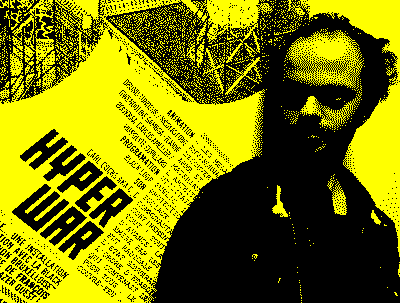
[ EXPOSITIONS ]
2011 “Fire Box” avec Francesco Defourny, Mr Pimpant, Charlotte Duncker et Brice Dumas (Aix-En-Provence) ; “Convoi Curieux”, 20 ans de l’Association / PCF n°2 (Aix-En-Provence, Sierre, Salines Royale de Arc, Senan) ; “Mystères” (Maison des Cultures de St Gilles, Bruxelles) ; “Génération Spontanée” , Jean-Marie Derscheid & Thierry Bellefroid (Bruxelles) ; PCF n°3 (Aix-En-Provence)
2012 Vrak Festival, Théâtre de l’L, avec François Zajéga, Fa Césario et Francesco Defourny ; élaboration d’une reflexion thématique autour de l’abri. Création des éditions Super-Structure
2013 “Zombie go home please”, construction d’une muraille, d’un abris et exposition des originaux publiés dans Super-Structure (Tournai) ; “Triple Entente”, Les Mariniers / Le Joli Mai (Bruxelles)
2014 “Triple Entente”, Festival Off (Angoulême) ; “Hyperwar”, installation immersive interactive, fruit d’un travail collectif d’une dizaine d’artistes en collaboration avec la galerie Lazer Quest (Paris)
2015 “Eloge de la Fuite”, avec Sukrii Kural, Le Lac (Bruxelles) ; “Architecte S-S”, avec Roméo Julien, Bibliothèque Culturelle d’Auderghem (Bruxelles) ; “Ultra-Structure: jour de l'homme moderne” avec Sukrii Kural, élaboration d’un parcours de survie, Le Lac (Bruxelles) ; “PrintNoiz”, exposition collective, La Friche Belle de Mai (Marseille)
2016 “Heat Company”, installation “Baptisun” avec Baptiste Brunello, After Howl (Bruxelles) ; “Chrome Noir”, avec Sybille Deligne, Adrien Fregosi et Remi Lambert, galerie P38 (Paris) et Hypercorps (Bruxelles) ; “Constellations”, avec Sukrii Kural, installation en bois et marbre, La Fanzinothèque (Poitiers)
[ EDITIONS ]
2006 co-fonde les éditions Nos Restes avec Carl Roosens et Alexandre De Moté : “Des histoires de nain porte qui” ; “Nobody of small size” ; “J’adore” n°1, 2, 3 ; “Comme toi” ; “No Rest” n° 1 et 2 ; “Temps Mort” ; “La Grosse Mouche” n°1 et 2.
2008 rejoint Francesco Defourny et Eric Nosal, les créateurs de “George”, un fanzine toujours actif avec plus de 30 numéros dans lequel il publie diverses histoires.
2009 “Pursue & Legs” pour la revue Lapin, n°37 à 44, L’Association. Fonde les éditions “Récits Express”, publications de récits personnels “Multi Purpose”, “La Baie de l’épouvante”, “Franco”, “Worst Case”, “How to find Franco-Delphia” et des travaux de Francesco Defourny, Anne Simon, Vincent Wagnair, Clément Xavier
2011 participe à la revue “La Tranchée Racine” aux éditions United Dead Artist de Stéphane Blanquet. édite “Les Grands Maîtres” avec Roméo Julien, Francesco Defourny, Clément Xavier, Jon Chandler, Jérôme Puigros Puigener, Vincent Wagnair, Anne Simon, François De Jonge, Manuel Gomez Burns, Antoine Duthoit, Etienne Beck.
2012 fonde les éditions Super-Structures. “Enfermé durant une semaine au seins d’un local, nous nous sommes pris à construire un abris/bunker dans lequel nous avons fomentés divers plans et autres histoires sur la thématique de la survie.”
Super-Structure n°0.1. “La revue se propose de construire sur le chaos, se préparer à l’apocalypse, et l’on peut y trouver en son centre un mode d’emploi pour construire son propre abri anti-atomique.”
Super-Structure n°1.1 propose “un catalogue commenté d’abris et de schéma de toutes sortes. Tout cela est très fécond plastiquement, et emmène la bande dessinée vers la cartographie, la liste, le catalogue, l’architecture, le monumental et le fragment.” 2013 Revue Super-Structure n°1.2 avec Le Club Superette, Blofret Valide, Roméo Julien, Matti Hagelberg, Jon Vaughn, Lucile Gautier, Juliette Etrivert, Tommi Musturi, Margaux Duseigneur, Singeon, Pier Ferrero, Charline Colette, Mike Redmond, Shobo-Shobo, Antoine Marchalot, Luca Retraite, Jérôme Puigros-Puigener, Apolline Shoser, Pia-Mélissa Laroche, Juliette Roméro, Aisha Franz, Silio Durt, Daniel Cantrell, Hicham Amrani, Ludovic Boulard Le Fur, Charles Renel, Hélène Jeudy, Bert Krooshof, Sammy Stein, Faye Corral Johnson, Manoi, Jules Canoué, Gwendoline Desnoyers, Pascal Matthey, Manuel Gomez Burns, Eric Lambé. Super-Structure n°2 /
2014 “Véhicules”, revue Super-Structure n°3.1 avec Charline Colette, Regis Turner, Mehdi Shobo Shobo, Baptiste Brunello, Charles Renel, Renaud Thomas, Valfret, Josephine Ritschel, Sarah Louise Barbett, Apolline Shoser, Tom LeBaron Khériff, Jérémy Boulard Le Fur, The Pit, Margaux Duseigneur, Hugo Ruyant, Adrien Herda, Oriane Lassus, Lucile Gautier, Ludovic Boulard Le Fur, Pierre Ferrero, François De Jonge, Jules Canoué, Mike Redmond, Faye Coral Johnson, Tom Richerand, Luca Retraite, Alice Méteignier, Roméo Julien, Horfée, Daniel Cantrell, Vanessa Dziubia, Judex, Maxime Jeune, Antoine Marchalot, DLCTVB, Le Club Superette, Adrien Coquart, Vixene Vixe, Singeon, Sukrii Kural, Mathieu Desjardin
2015“Éloge de la Fuite” revue Super-Structure n°3.2
“Formes et Monuments” revue Super-Structure n°4, avec A.W.A.A., Baptiste Brunello, Jean Philippe Bertin, Antoine Caecke, Jul Canoué, Etienne Chaize, Mavado Charon, DLCTVB, Margaux Duseigneur, Adrien Frégosi, Louis Granet, Hélène Jeudy, Judex, Sukrii Kural, Riton Lamort, Lando, Pia Mélissa Laroche, Valérie Lebrun, Lisa Mouchet, Luca Retraite, Jérémy Perrodeau, Charles Renel, Juliette Roméro, Léon Sadler, Shobo Shobo, Sammy Stein, Sthatis Tsemberlidis, Jon Vaughn ;
“Le Dimanche les volcans sont en vacance”, Dans le Ciel Tout Va Bien, Super-Structure
2016 “Chrome Noir”, avec Roméo Julien, Sukrii Kural, Jérémy Perrodeau, Baptiste Brunello et Deks
0 notes
Text
THE DESILU REVUE
“The Westinghouse Desilu Playhouse” ~ December 25, 1959

Produced by Bert Granet & Lucille Ball
Directed by Claudio Guzman
Written by Bob Schiller & Bob Weiskopf
Original Music by Walter Kent & Walton Farrar
Synopsis: The Desilu Playhouse is hosting a Christmas Party and the action flashes back to the group's first opening night, at which Lucy was a nervous wreck as their producer. In between songs and dance numbers, Lucy, Vivian, Bill, and Desi indulge in some classic “I Love Lucy” antics when Desi bans Lucy from backstage. Naturally, she finds a way in!
Starring...
Lucille Ball was born on August 6, 1911 in Jamestown, New York. She began her screen career in 1933 and was known in Hollywood as ‘Queen of the B’s’ due to her many appearances in ‘B’ movies. With Richard Denning, she starred in a radio program titled “My Favorite Husband” which eventually led to the creation of “I Love Lucy,” a television situation comedy in which she co-starred with her real-life husband, Latin bandleader Desi Arnaz. The program was phenomenally successful, allowing the couple to purchase what was once RKO Studios, re-naming it Desilu. When the show ended in 1960 (in an hour-long format known as “The Lucy-Desi Comedy Hour”) so did Lucy and Desi’s marriage. In 1962, hoping to keep Desilu financially solvent, Lucy returned to the sitcom format with “The Lucy Show,” which lasted six seasons. She followed that with a similar sitcom “Here’s Lucy” co-starring with her real-life children, Lucie and Desi Jr., as well as Gale Gordon, who had joined the cast of “The Lucy Show” during season two. Before her death in April 1989, Lucy made one more attempt at a sitcom with “Life With Lucy,” also with Gordon, which was not a success and was canceled after just 13 episodes. She died on April 26, 1989 at the age of 77.
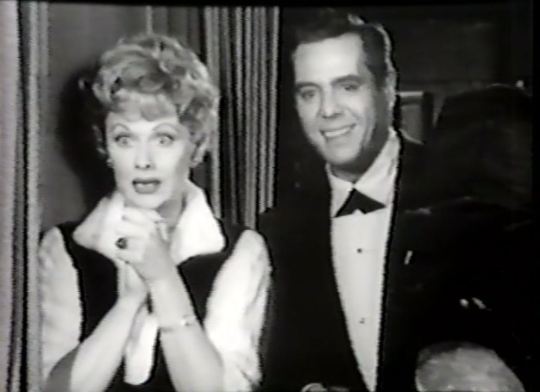
Desi Arnaz was born in Cuba in 1917 and immigrated to America as a youngster. He was a musician who married Lucille Ball in 1940 after meeting her on the set of 1939’s Too Many Girls, which he had done on stage in New York. In order to keep him ‘off the road’ Ball convinced producers to cast him as her husband in a new television project based on her radio show “My Favorite Husband.” The network was convinced. In 1951, Arnaz and Ball began playing Lucy and Ricky Ricardo, roles they would be identified with for the rest of their lives. The couple had two children together, Lucie and Desi Jr. In 1960, Ball and Arnaz divorced. Desi became a producer, responsible for such hits as “The Mothers-in-Law” (1967-69). He re-married in 1963. Desi Aranz died in 1986, just a few years before Ball.
Desi also narrates the program.
Special Guest Star
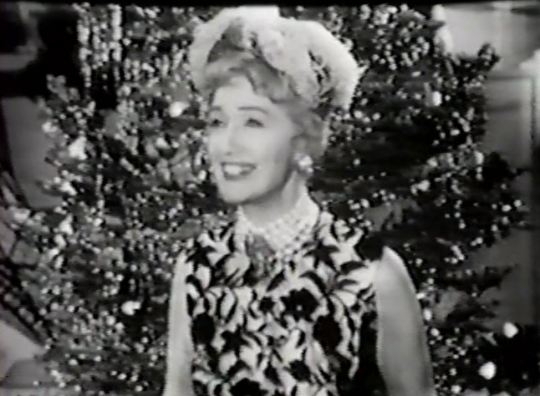
Hedda Hopper was born Elda Furry in Hollidaysburg, Pennsylvania. She was one of Hollywood’s most powerful and influential columnists. She appeared on “I Love Lucy” and “The Lucy-Desi Comedy Hour.” Among her hundreds of films as an actress, she did two with Lucille Ball: Bunker Bean (1936) and That’s Right – You’re Wrong (1939). Hopper was best known for her flamboyant hats. In films and television, Hopper has been portrayed by such actors as Fiona Shaw (RKO 281), Jane Alexander (Malice in Wonderland), Katherine Helmond (Liz: The Elizabeth Taylor Story), Helen Mirren (Trumbo), Tilda Swinton (Hail, Caesar!), Judy Davis (“Feud”), and Holly Kaplan (”Hollywood”).
With...
William Frawley was already a Hollywood veteran when he was hired by Desi Arnaz to play Fred Mertz on “I Love Lucy.” After the series concluded he joined the cast of “My Three Sons” playing Bub Casey. His final appearance before his death in March 1966 was as a stable groom on an episode of “The Lucy Show,” also featuring Ann Sothern.
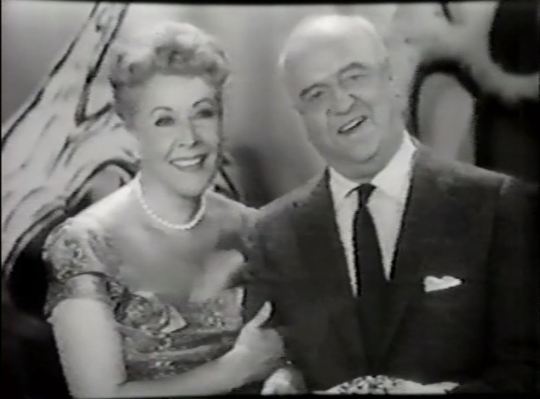
Vivian Vance was born Vivian Roberta Jones in Cherryvale, Kansas in 1909, although her family quickly moved to Albuquerque, New Mexico where she was raised. She had extensive theatre experience, co-starring on Broadway with Ethel Merman in “Anything Goes.” She was acting in a play in Southern California when she was spotted by Desi Arnaz and hired to play Ethel Mertz, Lucy Ricardo’s neighbor and best friend. The pairing is credited with much of the success of “I Love Lucy.” Vance was convinced to join the cast of “The Lucy Show” in 1962, but stayed with the series only through season three, making occasional guest appearances afterwards. She made a total of six appearance on “Here’s Lucy.” She also joined Lucy for a TV special “Lucy Calls the President” in 1977. Vance died two years later.
Guests...
John Bromfield (Audience Member) was best known for playing the title role in the Desilu / CBS series “U.S. Marshal.” He retired from acting in 1960 to become a commercial fisherman. In 1959, he was married to Larri Thomas, who appeared in “Lucy Wants a Career” (1959) on “The Westinghouse Desilu Playhouse.” He died in 2005 at age 83.
Spring Byington (below) received an Academy Award nomination for her role as Penelope Sycamore in You Can't Take It with You (1938). She appeared in twenty Broadway plays between 1924 and 1935. She made her film debut as Marmee March in 1933's Little Women. Her career included a seven-year run on radio and television as the star of “December Bride,” a Desilu / CBS production. The show followed “I Love Lucy” on the CBS Monday night line-up from Fall 1954 to Spring 1959. Desi Arnaz played himself on a 1956 episode of the series. She was a former MGM contract player who appeared in films from the 1930s to the 1960s. She played the “Batman” character J. Pauline Spaghetti in 1966. Byington made an appearance on the Desilu series “The Greatest Show on Earth” in 1964. Her final roles were as Major Nelson's mother on “I Dream of Jeannie” in 1967 and as the Mother General on “The Flying Nun” in 1968. She died in 1971 at age 84.
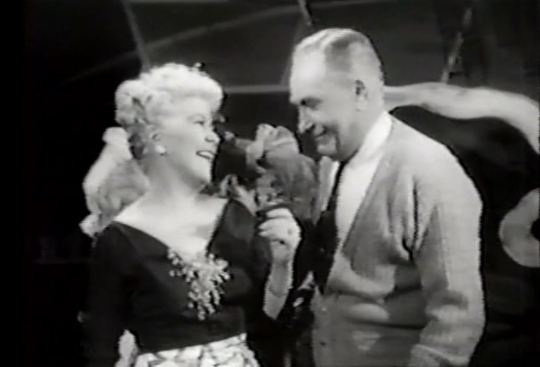
William Demarest (above) was best remembered as Uncle Charlie on “My Three Sons,” a role created after the death of William Frawley. This is one of two times Demarest and Frawley appeared together on screen. The other was in The Farmer's Daughter (1940). He was nominated for an Academy Award in the biography, The Jolson Story (1946). Demarest did three films with Lucille Ball, including Sorrowful Jones (1949). He died in 1983 at age 91.
Lita Baron (Audience Member, below) was born Isabelita Castro and played Ricky Ricardo's former dance partner Renita Perez in “Cuban Pals” (ILL S1;E28). She also appeared in the films Club Havana (1945) and Don Ricardo Returns (1946). Despite this, Baron was actually born in Spain, not Cuba. From 1948 to 1970 she was married to actor Rory Calhoun and had appeared on his CBS / Desilu series “The Texan.”
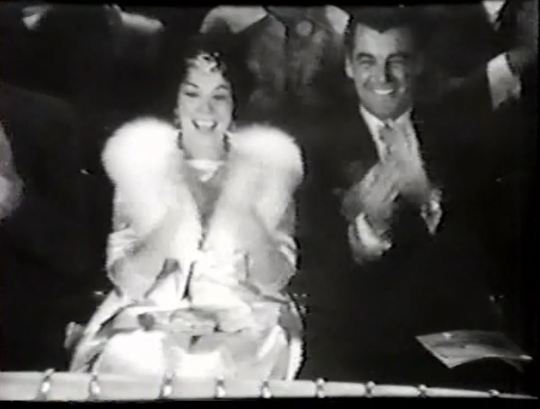
Rory Calhoun (Audience Member, above) starred in many Westerns in the 1950s and '60s and was famous for his black cowboy hat. As a young man he spent some time in prison. Born Francis Timothy McCown, his screen name was given to him by David O. Selznick. In 1959 he was appearing in the CBS / Desilu show “The Texan” (1958-60).
Bonita Granville (Audience Member) was nominated for an Oscar in 1937 for These Three. She was also known as Nancy Drew from the serials of the 1930s. In 1959, Granville became producer of the TV series “Lassie” and this is probably the reason she is in the audience here.
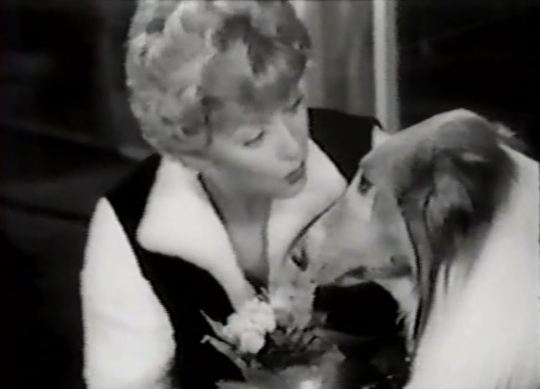
Lassie is one of the most famous canine stars in Hollywood history. From 1954 to 1974, Lassie had her own series. The collie also starred in numerous films. She was mentioned on “I Love Lucy.”
George Murphy (Audience Member) started singing and dancing on Broadway at age 25. There he is credited with introducing Bob Hope to his wife Dolores. In Hollywood, he became Screen Actors Guild (SAG) President and was eventually elected US Senator. He was given a special Oscar in 1950. Murphy was in four films with Lucille Ball between 1934 and 1941. He starred with Desi Arnaz in The Navy Comes Through (1942) and Bataan (1943). In 1959, Murphy and Desi switched roles when Desi took a role in his own anthology series “The Westinghouse-Desilu Playhouse” and Murphy acted as guest host. Murphy interviewed Lucy and Desi for “MGM Parade” in February 1956. He died in 1992 at age 89.

Ann Sothern appeared in the first “Lucy-Desi Comedy Hour” “Lucy Takes a Cruise to Havana” (1957) as Susie MacNamara, the same character she played on her show “Private Secretary” from 1953 to 1957. In return Lucille Ball played Lucy Ricardo on her show in 1959. Sothern appeared with Ball in five films between 1933 and 1943. On “The Lucy Show” Sothern made three appearances as Rosie, the Countess Framboise. She was nominated for an Oscar for her final screen appearance in The Whales of August in 1987. She is buried near her home in Sun Valley, Idaho, a place also dear to Lucy and Desi.
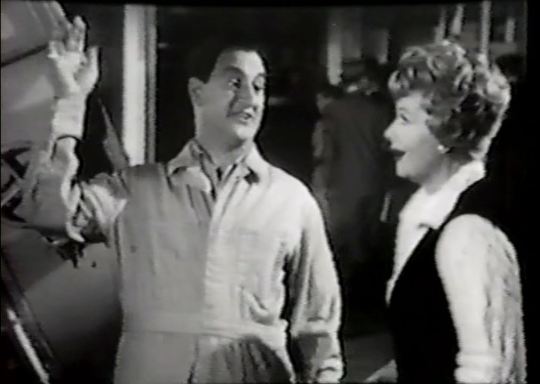
Danny Thomas was born Amos Muzyad Yakhoob Kairouz in 1912. His screen career began in 1947 but he was most famous for appearing on television in the long-running show “Make Room for Daddy” (1953-64), which was shot at Desilu Studios. When the series moved from ABC to CBS in 1957, Thomas and the cast starred in a rare TV cross-over with “The Lucy-Desi Comedy Hour” titled “Lucy Makes Room for Danny” (December 1958). In return, Lucy and Desi turned up on Thomas’s show. Fifteen years later, Lucy and Danny did yet another cross-over when Lucy Carter of “Here’s Lucy” appeared on “Make Room for Granddaddy.” In addition, Thomas also played an aging artist on a 1973 episode of “Here’s Lucy.” He died in 1999.
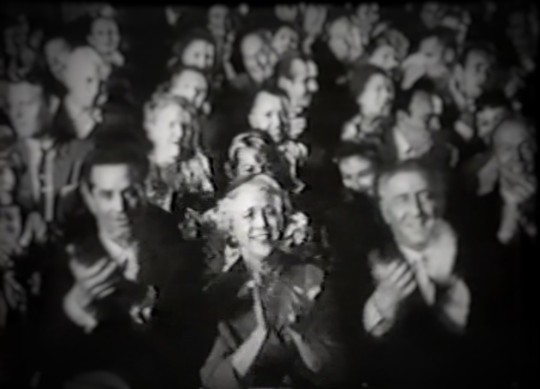
Bess Flowers (Audience Member, uncredited) was dubbed ‘Queen of the Extras’ in Hollywood and is credited with more than 700 film and TV appearances from 1923 to 1964. She was seen in the audience of Over the Teacups in “Ethel’s Birthday” (ILL S4;E8) and The Most Happy Fella during “Lucy’s Night in Town” (ILL S6;E22). Flowers also made five uncredited appearances on “The Lucy Show.” Not surprisingly, she was a founding member of SEG, the Screen Extras Guild (now part of SAG) in 1945. She appeared in more films with Lucille Ball than any other performer.
Cast of the Desilu Workshop...

Robert Osborne was the host on Turner Classic Movies from its inception in 1994, in large part due to his knowledge of film. It was Lucille Ball who suggested that Osborne combine his interest in classic film and training in journalism, and write instead of act. Osborne took this advice and produced "Academy Awards Illustrated" a book which then begat his years at The Hollywood Reporter. He also became the official historian of the Academy of Motion Picture Arts and Sciences. He also acted in “Chain of Command” for the “Westinghouse Desilu Playhouse,” also in 1959, and also with Hugh O'Brien. Osborne died in 2017 at age 84.
Billed as “Bob Osborne” in the opening number.
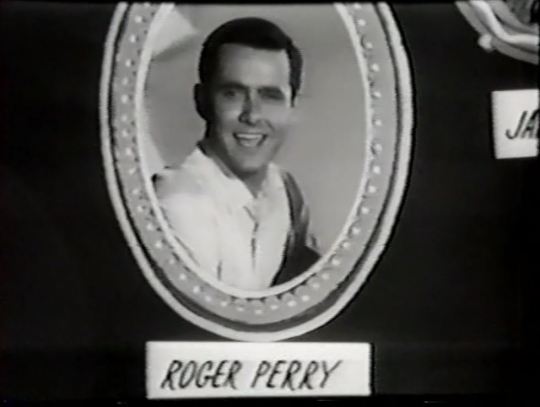
Roger Perry also appeared in “Ballad of a Bad Man” for “Westinghouse Desilu Playhouse” in 1959 written by Desi Arnaz. He later starred in Desilu's “Mannix” and “Star Trek.” He died in July 2018 at age 85.
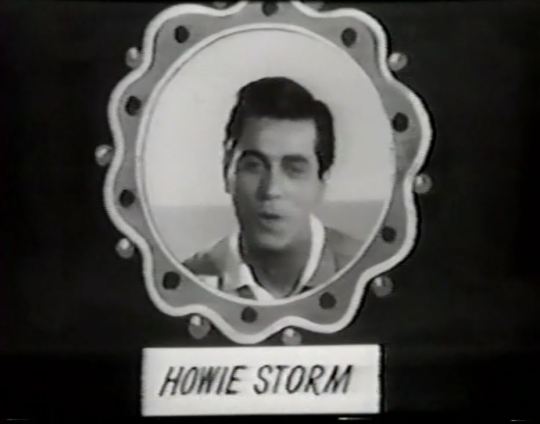
Howard Storm married fellow Playhouse cast member Marilyn Lovell in 1959. He started directing in 1975. In 1959 he appeared in the CBS series “Hennessy” and the following year made an appearance on the Desilu series “The Untouchables.”
Billed as “Howie Storm” in the opening number.
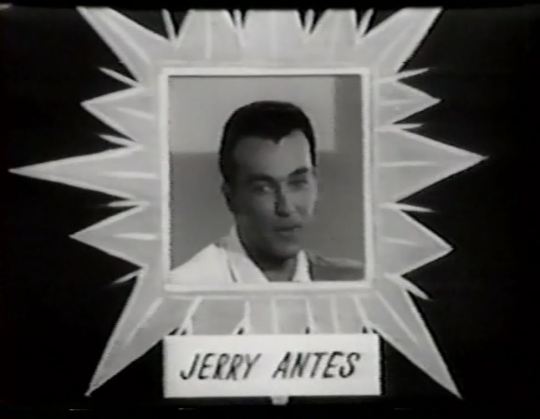
Jerry Antes graduated from Hollywood Professional School in 1944. In “Hedda Hopper's Hollywood” Lucille Ball calls him by name in their brief promotion of the Desilu Playhouse. Prior to this, Antes was a dancer who made three appearances on “The Alan Young Show” (1950).
Majel Barrett was later cast as Nurse Chapel on Desilu’s new space adventure series, “Star Trek.” During this time she had a relationship with the show’s creator Gene Roddenberry, marrying him in 1969, the same year the series was canceled. She was part of most all iterations of “Star Trek” until her death in 2008. In 1962 she played a secretary in “Lucy is Kangaroo for a Day” (TLS S1;E7).
Billed as “Majel Barret” in the opening number.
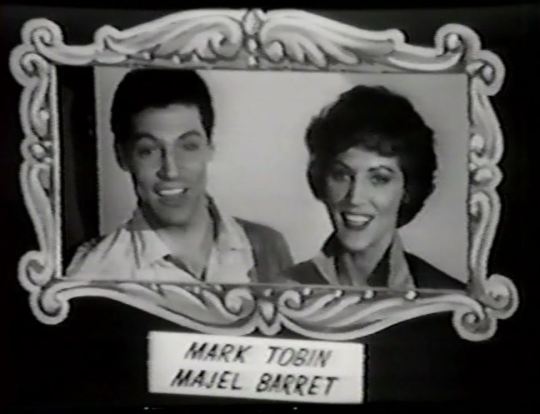
Mark Tobin appeared on the TV series “Lock-Up” in 1959. He made two appearances on the original “Star Trek,” one as a Klignon. He also played a Klignon on “Star Trek: Voyager” in 1999.
Robert Barron made the 'B' movie Tank Commandos in 1959. He only has one other credit of record, a 1964 appearance in the film The Ballad of a Gunfighter. He died in 2002 at age 78. This may be due to the misspelling of his surname.
Billed as “Rob Barran” in the opening number.
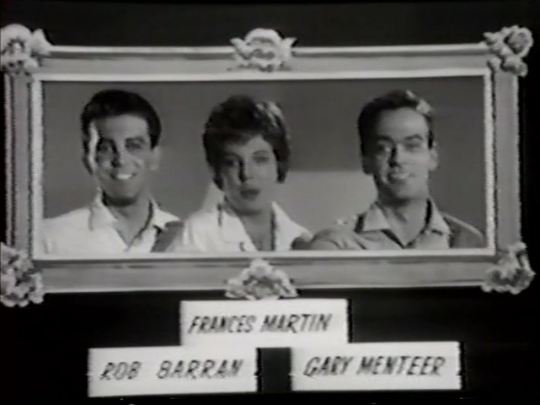
Fran Martin
Billed as “Frances Martin” in the opening number.
Gary Menteer started his career as a dancer, but later transitioned to being a writer, director, and casting agent, earning two Emmy nods for “Punky Brewster” (1984-88). He died in 2016 at age 76.
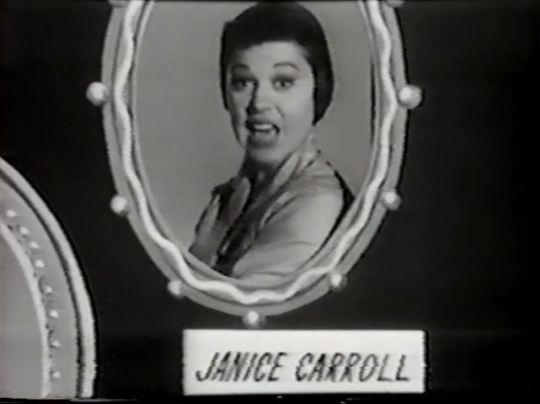
Janice Carroll started playing background characters and uncredited roles in 1951. In 1959 she appeared in the Desilu series “U.S. Marshal.” Her final screen appearance was in 1987. She died in 1993 at age 61.
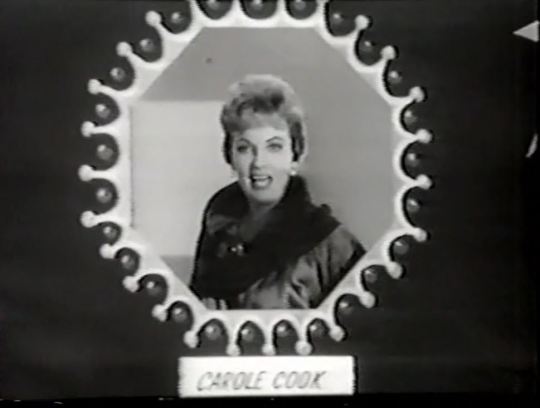
Carole Cook made four appearances playing Thelma Green on “The Lucy Show,” although she also played Mrs. Valance in three episodes and a variety of other characters in eleven others. Although she was born as Mildred Cook, Ball suggested she take the name Carole, in honor of Lucy’s great friend, Carole Lombard. Cook also went on to appear in five episodes of “Here’s Lucy.”
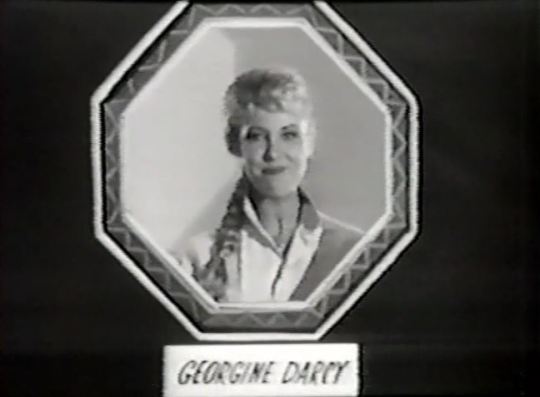
Georgine Darcy was most famous as Miss Torso in the Hitchcock thriller Rear Window (1954), her screen debut. In 1958 she made a single appearance on “Make Room for Daddy” filmed by Desilu. Her final appearance was on Desilu's “Mannix” in 1971. As part of the Desilu Playhouse, she was also seen in “Hedda Hopper's Hollywood.” She died in 2004 at age 73.
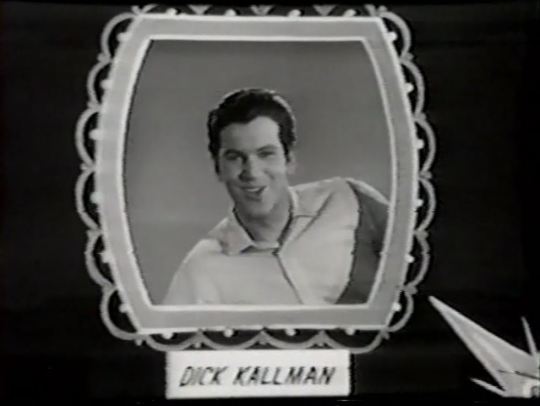
Dick Kallman was next cast as a bellboy in the final “Lucy-Desi Comedy Hour” “Lucy Meets the Mustache” (1960). Kallman replaced Tommy Steele on Broadway in the musical Half a Sixpence. The actor was killed during a robbery in 1980.
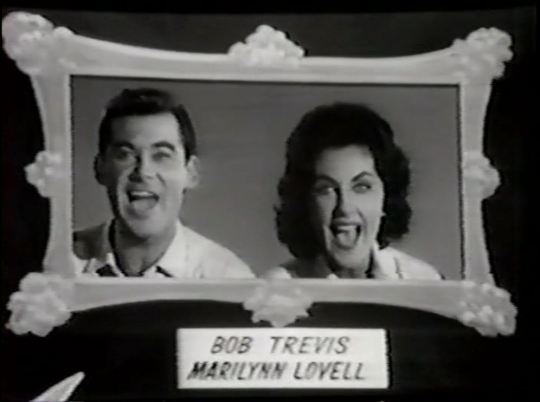
Bob Travis had only one previous screen credit, appearing on “The Jack Paar Tonight Show” in September 1958.
Billed as “Bob Trevis” in the opening number.
Marilyn Lovell was a singer who appeared in Hollywood and New York. Her first husband was Desilu Playhouse member Howie Storm. Her second husband was Carol Burnett's musical director Peter Matz. In 1959 she made an appearance on CBS's “Tightrope.” She died in 2012 at age 80.
Billed as “Marilynn Lovell” in the opening number.

John O'Neill was primarily a singer, who sang the title tune of the Western series “Wagon Train” (1958-59). He appeared in Young Jesse James (1960), and is rumored to have been one of the whistlers for the theme of The Good, The Bad, And the Ugly (1966).
Billed as “Johnny O’Neill” in the opening number.
About “The Westinghouse Desilu Playhouse”
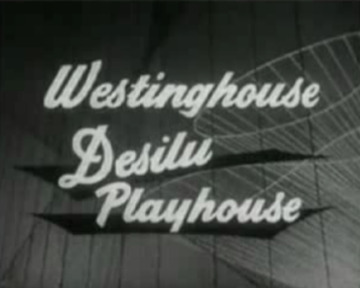
After the end of the half-hour “I Love Lucy” episodes, Desi Arnaz convinced CBS to purchase an anthology series titled “Desilu Playhouse” which would feature different hour-long dramas every week along with monthly stories of the Ricardos and the Mertzes.
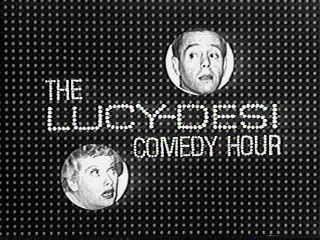
Thirteen hour-long “I Love Lucy” adventures were eventually made and sold to syndication as “The Lucy-Desi Comedy Hour,” ten of which were produced under Westinghouse sponsorship. The appliance company paid a then-record 12 million dollars to sponsor the show, which resulted in the cancellation of their prestigious “Studio One” anthology show. Desi Arnaz hosted the show and introduced the stories from in front of a show curtain (ostensibly at the Desilu Playhouse).
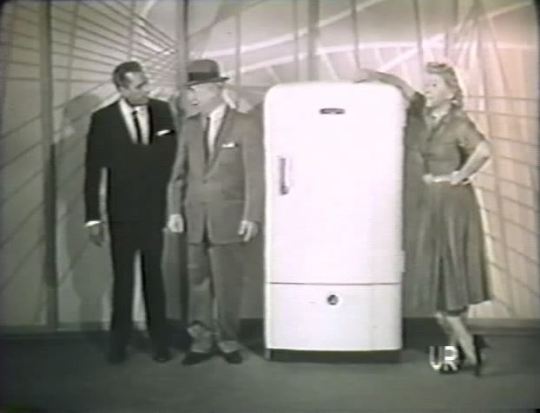
Desi, Lucy, Vivian Vance, and William Frawley, were often involved in the lengthy studio-filmed Westinghouse commercials and promotions, with Betty Furness spokesperson for the Westinghouse products.
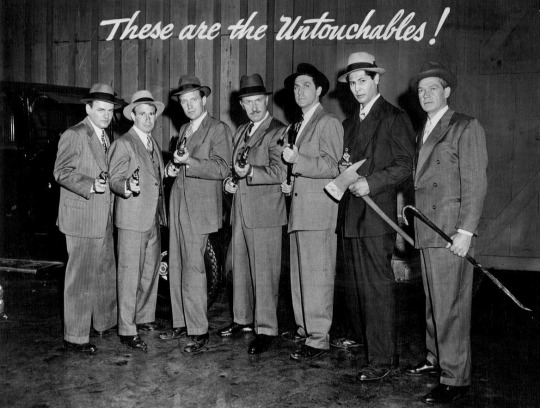
Although it wasn't around long, the series gave birth to pilots for “The Untouchables” and “The Twilight Zone.” In fact, many entries proved to be pilots for series, not all of which were produced.
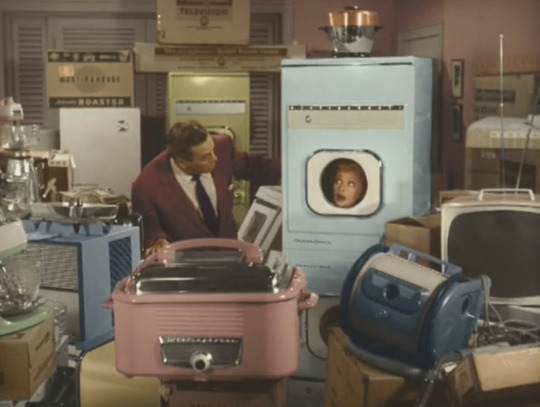
In the summer of 1958, in anticipation of the partnership, the cast of “I Love Lucy” played themselves in aun industrial film that toured the Desilu Studios, promoted “Lucy Goes to Mexico” and highlighted Westinghouse appliances. The film was never broadcast, but only made to show Westinghouse dealers and corporate clients. Years later it was colorized for video.
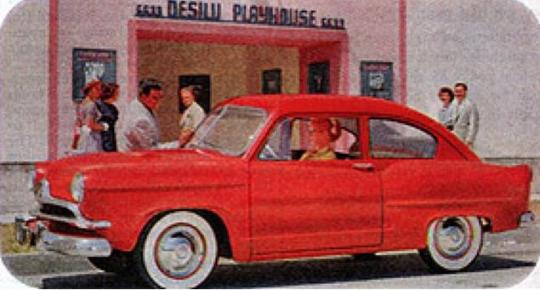
The Desilu Playhouse was an actual little theatre on the Desilu backlot which hosted classes for actors and put shows for agents and industry insiders.
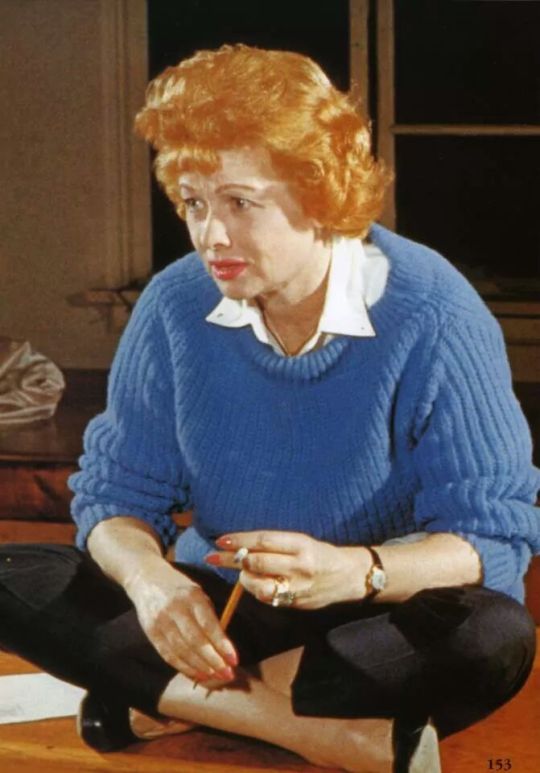
When Lucille Ball joined RKO in the 1930s, the program was headed by Ginger Rogers' mother, Lela. Lucille wanted to continue the tradition.
About “The Desilu Revue”
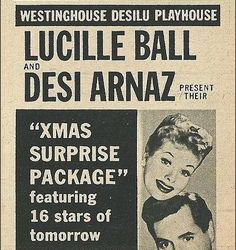
In late 1959, sixteen of the workshop actors joined the “I Love Lucy” cast in creating a holiday special. The show aired on Christmas Day 1959 and featured gossip columnist Hedda Hopper as well as many other stars then working on the Desilu lot.
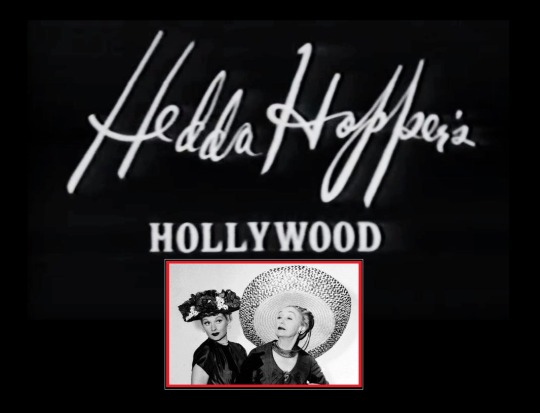
Hopper also took the opportunity to shoot footage for her own TV special, “Hedda Hopper's Hollywood”, with Lucy cross-promoting her special.
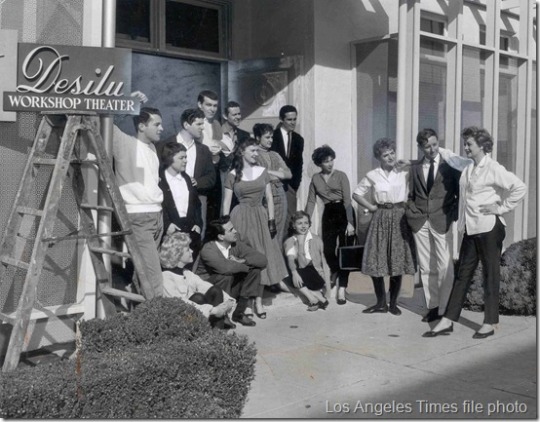
This is essentially a musical variety show starring the members of the Desilu workshop, actors Desilu was grooming to appear in series’ or launch their careers in films. Among the most famous to participate were Robert Osborne (future host of Turner Classic Movies) and Carole Cook, who went on to play character roles on Lucy's sitcoms and on Broadway. Majel Barrett would become known as “the mother of Star Trek” (a Desilu series) and wife to Gene Rodenberry, the show's creator.
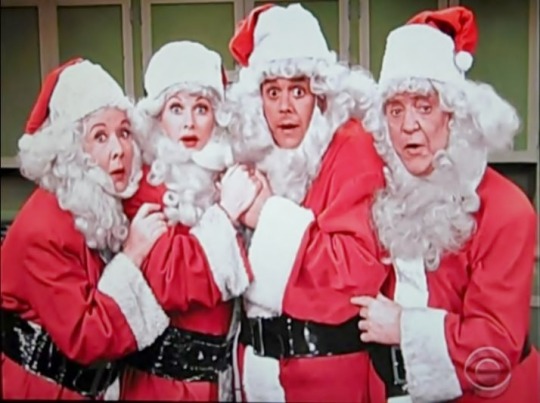
This program was aired only once. It is one of just a handful of holiday programs produced by Lucille Ball. A Christmas 'tag' was added to episodes of “I Love Lucy” until it was fleshed out into a full-length flashback show during season six. “The Lucy Show” produced two Christmas themed episodes, and one for New Year's Eve.
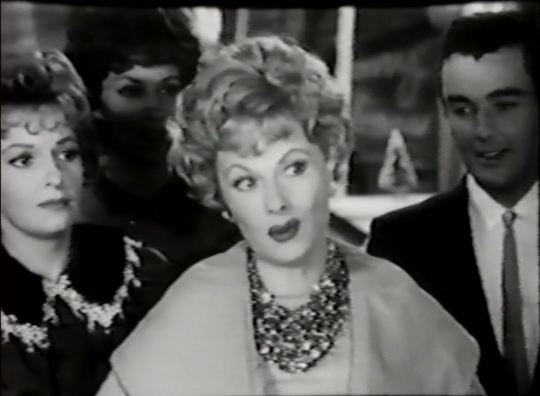
The show opens with Lucille Ball driving a golf cart through the studio streets laden down with a stack of Christmas presents and a decorated Christmas tree. Desi Arnaz narrates. Inside the Desilu Playhouse, the cast are decorating the theatre and singing “Jingle Bells.” Hedda Hopper arrives and compliments the tree:
Hedda Hopper: “It would make a stunning hat!”
Hopper is going to do a column on the 'kids' of the workshop. As Lucy dashes off to check on the catering from the commissary, Desi tells Hedda how nervous Lucy was during the opening night of their first workshop production. Flashback to opening night – and Lucy is backstage busily checking in with all of the ‘kids’ in the workshop.
Lucy has prevailed upon nearly everyone at Desilu to pitch in. William Demarest and Spring Byington are working on costumes. Lassie delivers opening night flowers to Lucy. Vivian Vance is doing make-up. William Frawley is the stage doorman.
Lucy reprimands Janice Carroll for peeking through a hole in the curtain to see her mother – it is bad luck. Lucy asks Desi to conduct the orchestra instead of their usual conductor. Ann Sothern (wearing a tiara and fur stole) takes tickets – in between signing her autograph for fans.
Danny Thomas is outside operating the huge searchlight. He tells Lucy that he started in show business as an usher in the movies with a tiny flashlight – and look at him now!
Desi enters the auditorium with his baton to start the show, but cannot find the entrance to the orchestra pit. After a few words with audience member George Murphy, he jumps the railing.
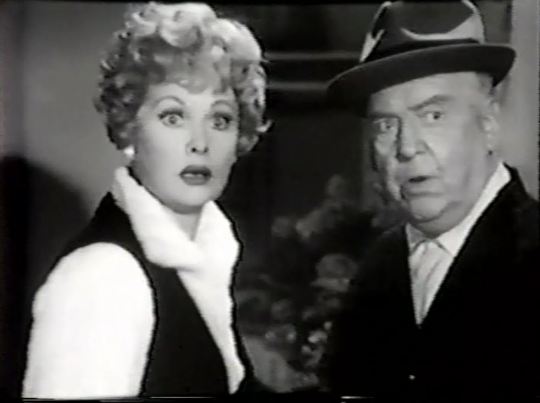
Lucy barrels through the stage door to deliver her last minute notes to the cast but is stopped by Bill Frawley, remembering Desi's orders to keep Lucy away from the cast. His behavior surprises Lucy.
Lucy: “Bill Frawley how can you be so mean?” Frawley: “Don't think of me as Bill Frawley. Think of me as Fred Mertz.” [evil laugh]
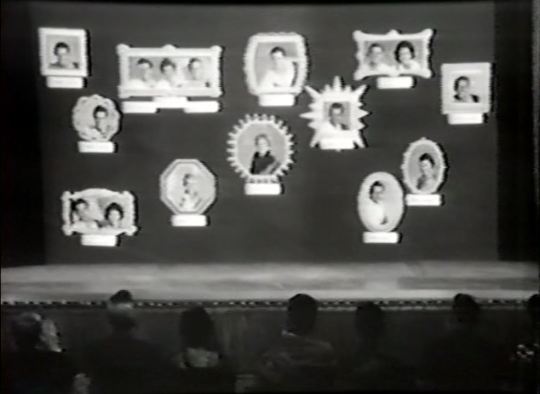
The 16 workshop members sing the opening number “We Wanna Be By You” written for the show by Walter Kent and Walton Farrar.
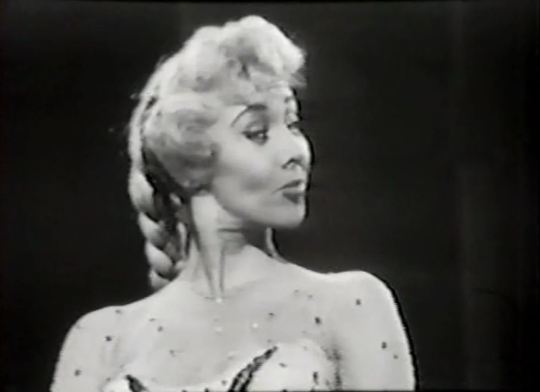
Next up is a jazz dance routine featuring Georgine Darcy, Jerry Antes, and Gary Menteer.
Vivian discovers Lucy trying to sneak backstage through a dressing room window. Lucy threatens to tell the audience Vivian's real age if she doesn't let her in! Bill Frawley discovers Lucy giving notes to the cast. His scowl scares Lucy into leaving the same way she came in!
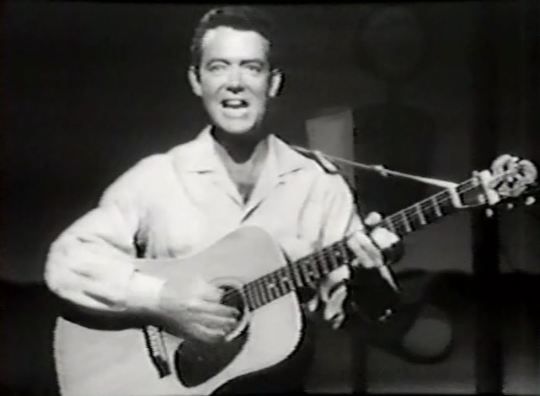
Johnny O'Neill sings “Fast Freight” by Terry Gilkyson while accompanying himself on the guitar. The song was a 1958 hit for The Kingston Trio.
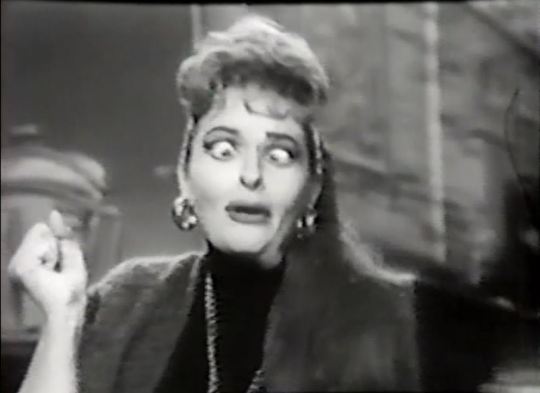
Dick Kallman (sporting a goatee) and Carole Cook do a beatnik number called “Hip To The Blues” by Baker, Young, Raskin, and Burger.
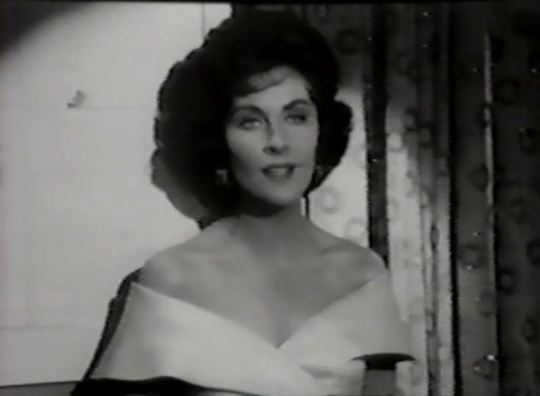
Marilyn Lovell sings the torch song “I Still Remember.”
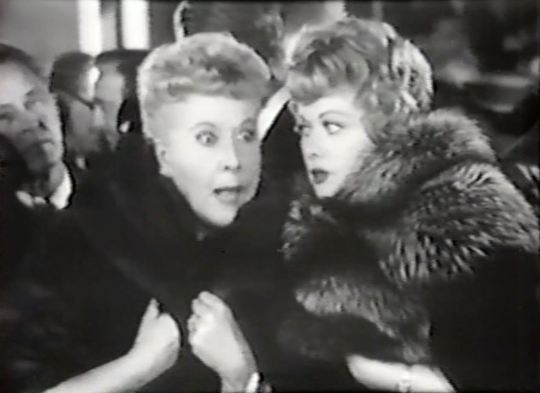
During the intermission, Lucy and Vivian bury themselves in fur coats up to their eyeballs to listen to the producers’ chatter about the first act. The only thing they overhear is that Ann Sothern has lost her gloves!
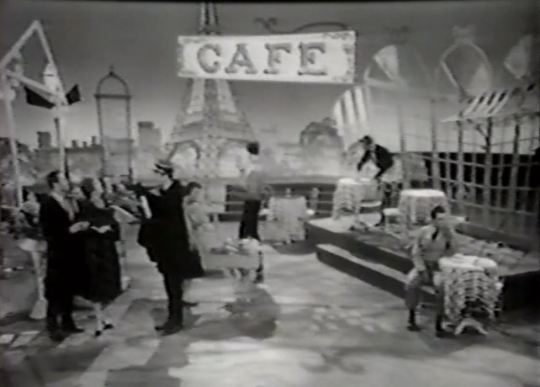
Act Two opens on a busy Parisian street with an American sailor on leave. The sailor sings “I'm in Love With Paris.” An Army officer sitting at a café table sings “Alone In Gay Paris.”
In the dressing room, Bob Osborne reads a note from Lucy written on the mirror in lipstick. It references using a hand mike in “the bandstand number.” Curiously, no such song is in the show. Perhaps it was cut or (more likely) never existed.

Carole Cook sings a comedy song called “Whistler's Mother” by Mike Stewart and Shelley Mowell. In it, Cook is seen as a tableau vivant of the famous painting come to life. She steps out of the frame and transforms into a vamp.
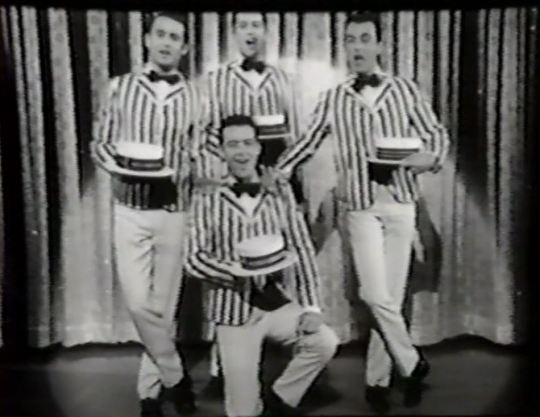
A barbershop-style song “Summertime is Summertime” by Walter Kent and Kim Gannon is sung by four of the men in candy striped suits and straw boaters. It opens up into a gay nineties dance number. It finishes with a cake walk to “Hey Do Ya Love Me Honey” led by Roger Perry singing and playing the piano.
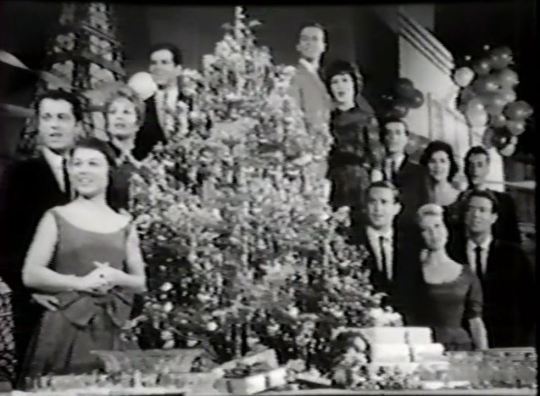
The program returns to the present and the Desilu Playhouse Christmas Party with Desi telling Hedda Hopper what happened on opening night. The workshop members sing “Let's Pretend It's Christmas Eve” while Lucy, Desi, Bill, Vivian, and Hedda look on adoringly.

Overcome with emotion, Vivian Vance impulsively gives Bill Frawley an affectionate kiss on the cheek and whispers “Merry Christmas” to him. Surprisingly, he returns the favor. Considering the well-known friction between the two, this is either very convincing acting or the pair had mended fences knowing their decade working together was finally drawing to an end. Vance had just nixed an “I Love Lucy” sequel about the Mertzes, despite the fact that Frawley was open to the idea.
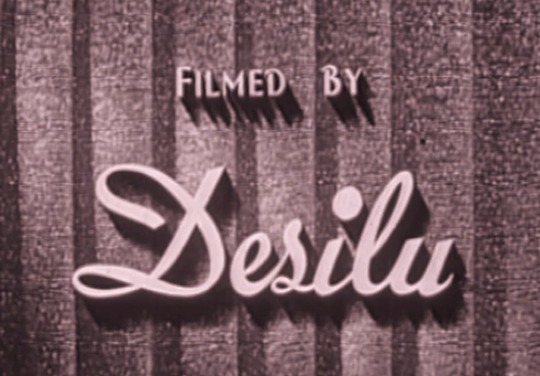
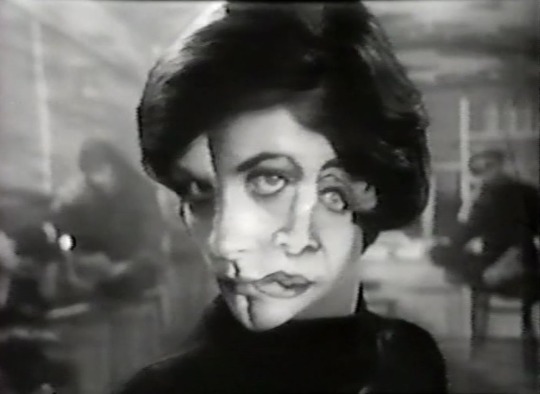
Not a camera trick! Make-up by Fred Phillips!
#The Desilu Revue#Westinghouse Desilu Playhouse#Westinghouse#Desilu#Lucille Ball#Desi Arnaz#Hedda Hopper#Vivian Vance#willliam frawley#Christmas#Revue#1959#Robert Osborne#Carole Cook#Majel Barrett#The Desilu Playhouse#RKO#Claudio Guzman#Bert Granet#Bob Schiller#Bob Weiskopf#The Lucy-Desi Comedy Hour#Hedda Hopper's Hollywood#Walter Kent#Walton Farrar#John Bromfield#Spring Byington#William Demarest#Lita Baron#Rory Calhoun
4 notes
·
View notes
Text
GO CHASE YOURSELF
April 22, 1938

Directed by Edward F. Cline
Produced by Robert Sisk for RKO Radio Pictures
Written by Paul Yawitz and Bert Granet, with contributions by Winifred Leah Lawrence, Edward Mecher, and William W. Watson, based on an original story by Walter O’Keefe
Synopsis ~ A mild-mannered bank clerk finds himself stuck a speeding trailer towed by gangsters after a bank robbery goes awry. Unfortunately for him, the police and even his own domineering wife, believe that he is the robber and so head off in hot pursuit precipitated a fast-paced merry chase.
PRINCIPAL CAST

Lucille Ball (Carol Meeley) makes her 38th film appearance since arriving in Hollywood in 1933. This is her first leading role.
Joe Penner (Wilbur Meeley) a major slapstick comic of the 1930s, this is his only appearance with Lucille Ball, who eclipsed him in fame as time went by.
Jack Carson (Warren Miles) also appeared with Lucille Ball in Stage Door (1937), and Having Wonderful Time (1938).
June Travis (Judith Daniels) makes her only appearance with Lucille Ball.
Richard Lane (Nails) also appeared with Lucille Ball in There Goes My Girl (1937), The Joy of Living (1938), and A Girl, A Guy, and a Gob (1944).
Fritz Feld (Count Pierre de Louis-Louis) also appeared with Lucile Ball in The Affairs of Annabel as Vladimir, and as a Paris Tour Guide in “Paris at Last” (ILL S5;E18).
Tom Kennedy (Ice-Box) also appeared with Lucille Ball in Old Man Rhythm (1935), and There Goes My Girl (1938).
Granville Bates (Halliday) also appeared with Lucille Ball in Chatterbox (1936), The Affairs of Annabel (1938), Next Time I Marry (1938), and Twelve Crowded Hours (1939).
Bradley Page (Frank) appeared with Lucille Ball in Blood Money (1933), Don’t Tell The Wife (1937), There Goes My Girl (1937), The Affairs of Annabel (1938), Annabel Takes A Tour (1938), and Twelve Crowded Hours (1939).
George Irving (Daniels) also appeared with Lucille Ball in The Affairs of Annabel (1938), and Don’t Tell The Wife (1938).
Arthur Stone (Warden) makes his only appearance with Lucille Ball. This is his final screen role.
Frank M. Thomas (Police Chief) also appeared with Lucille Ball in Joy of Living (1938), and Don’t Tell The Wife (1937).
“I guess ham just brings out the poetry in me. In some people poetry brings out the ham.” ~ Tony Anthony
UNCREDITED CAST
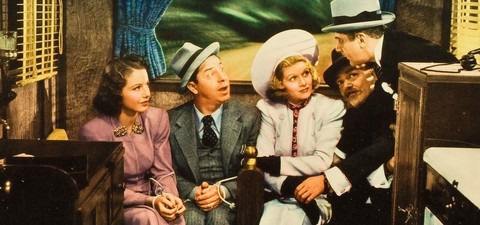
Bobs Watson (Junior) appeared with Lucille Ball in “Lucy Becomes a Reporter” (TLS S1;E17) in 1963.
George Shelley (Detective)
Ted Oliver (Detective Clark)
Rita Oehmen (Diner)
Clayton Moore (Reporter) was better known as The Lone Ranger.
Philip Morris (Cop) no relation to the tobacco company that sponsored “I Love Lucy”, his real name was Francis Charles Morris.
Napoleon Whiting (Porter)
Alan Bruce (Reporter)
Joseph E. Bernard (Daniels' Butler)
Stanley Blystone (Policeman in Backwards Car)
Otto Fries (Rube Wardell - Ventriloquist)
Diana Gibson (Dining Car Woman)
Chuck Hamilton (Policeman in Chief's Office)
John Ince (John Weatherby - Trailer Occupant)
Monte Vandergrift (Policeman in Chase Car)
Ray Turner (Porter)
Chester Clute (Excited Man)
William Corson (Reporter)
Lynton Brent (Photographer)
Margaret Armstrong (Mrs. Daniels)
Donald Kerr (Gas Station Attendant)
Edward Hearn (Raffle Seller)
Edith Craig (Mother)
Billy Dooley (Linesman)
Jack N. Green (Officer)
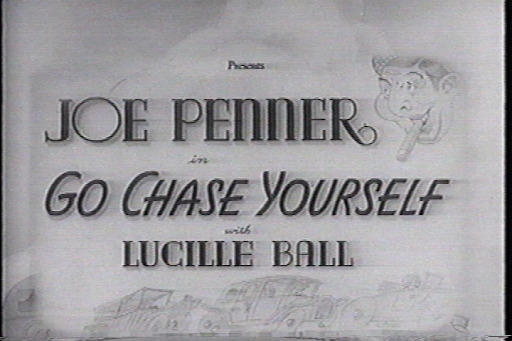
“CHASE YOUR” TRIVIA!

Penner pushed RKO to cast Lucille Ball after he heard her on “The Phil Baker Show”, a popular radio program on which she had just become a regular featured performer.
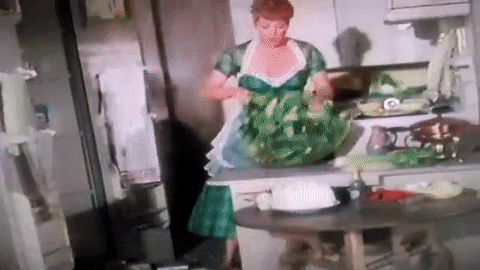
Part of this film's plot involves Lucille Ball inside of a runaway mobile trailer. Several months after filming this picture, Ball also spent much of her screen time inside of a mobile trailer in the film Next Time I Marry (1938). Later, in one of her better-known film roles, she starred in yet another mobile trailer-themed film in The Long, Long Trailer (1953).
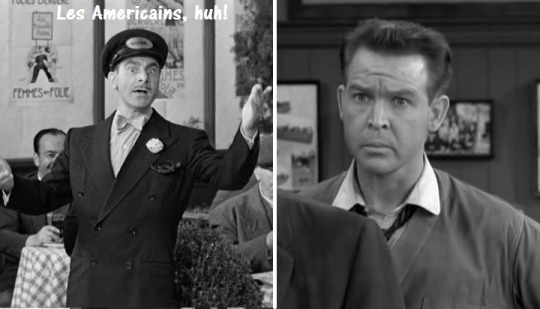
Supporting Cast members Fritz Feld and Bobs Watson were the only two members of the cast to later appear on Lucille Ball’s sitcoms.
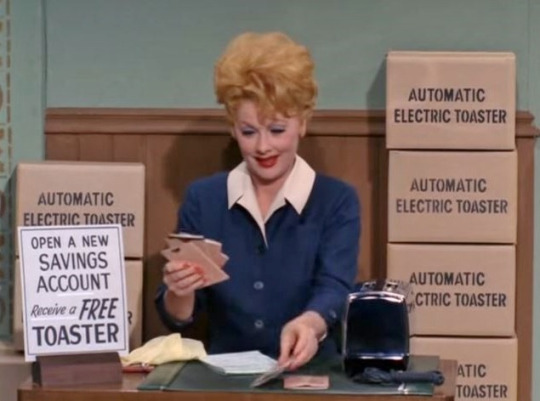
Lucille Ball plays the wife of a bank teller. Working in a bank is something Lucille Ball would get lots of experience at as Lucy Carmichael on “The Lucy Show.”

Trains also played a major part in episodes of “I Love Lucy,” “The Lucy-Desi Comedy Hour,” and “The Lucy Show”.
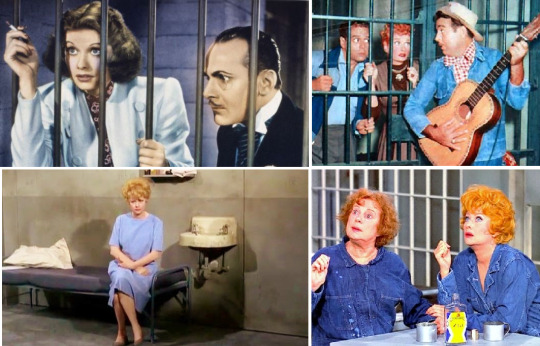
Lucy also lands in jail on “I Love Lucy”, “The Lucy-Desi Comedy Hour,” “The Lucy Show,” and “Here’s Lucy.”

4 notes
·
View notes
Text
A GIRL, A GUY, AND A GOB
March 14, 1941

Directed by Richard Wallace
Produced by Harold Lloyd for RKO Radio Pictures
Written by Bert Granet and Frank Ryan, based on a story by Grover Jones
Synopsis ~ A shy, quiet executive for a shipping firm who finds himself with a dilemma: he’s become smitten with his young temporary secretary but she’s the girlfriend of his Navy buddy - and the buddy is scheduled to be discharged in only a few days.

Note: “Gob” is a slang word for a sailor. This term first showed up in regard to sailors around 1909 and may have come from the word gobble. Reportedly, some people thought that sailors gobbled their food. The term also may come from the word gob, which means to spit, something sailors also reportedly do often.
PRINCIPAL CAST
Lucille Ball as (Dorothy ‘Dotty’ Duncan aka ‘The Girl’) is in her 52nd film since coming to Hollywood in 1933.

George Murphy (Claudius ‘Coffee’ Cup aka ‘The Gob’) was in four films with Lucille Ball between 1934 and 1941. In 1959, Murphy served as guest host of “The Westinghouse Desilu Playhouse” when Desi Arnaz took a role in his own anthology series. He was also a performer in “The Desilu Revue” aired in December 1959. As the host of “MGM Parade”, he interviewed Lucy and Desi in February 1956.
Edmond O'Brien (Stephen Herrick aka ‘The Guy’) won an Oscar in 1955 for The Barefoot Contessa. He was nominated a second time in 1965.
Henry Travers (Abel Martin) was nominated for an Oscar for Mrs. Miniver in 1943. He is best remembered for playing Clarence the Angel in It’s A Wonderful Life (1946).
Franklin Pangborn (Pet Shop Owner) did four films with Lucille Ball between 1937 and 1946.
George Cleveland (Pokey Duncan) did four more films with Lucille Ball till 1949.
Kathleen Howard (Jawme) makes her only appearance with Lucille Ball.
Marguerite Chapman (Cecilia Grange) makes her only appearance with Lucille Ball.
Lloyd Corrigan (Pigeon) did Two Smart People with Lucille Ball in 1949. He played the minister in “The Milton Berle Lucy-Desi Special” in 1959. He also did three episodes of “The Lucy Show.”
Mady Correll (Cora) makes her only appearance with Lucille Ball.
Frank McGlynn, Sr. (Pankington) makes his only appearance with Lucille Ball.
Doodles Weaver (Eddie) makes his only appearance with Lucille Ball.
Frank Sully (Salty) did four films with Lucille Ball before playing the man who delivers “The Freezer” on “I Love Lucy.”
Nella Walker (Mrs. Grange) also appeared with Lucille Ball in Fugitive Lady (1934).
Richard Lane (Recruiting Officer) previously appeared in three films with Lucille Ball in 1937 and 1938.
Irving Bacon (Mr. Merney) did seven films with Lucille Ball before playing Mr. Willoughby in in “The Marriage License” (1952) and Will Potter in “Ethel’s Hometown” (1955).
Rube Demarest (Ivory) makes his only appearance with Lucille Ball.
Charles Smith (Messenger) makes her only appearance with Lucille Ball.
Bob McKenzie (Porter) appeared in three other films with Lucille Ball.
Nora Cecil (Charwoman) makes her only appearance with Lucille Ball.
UNCREDITED CAST
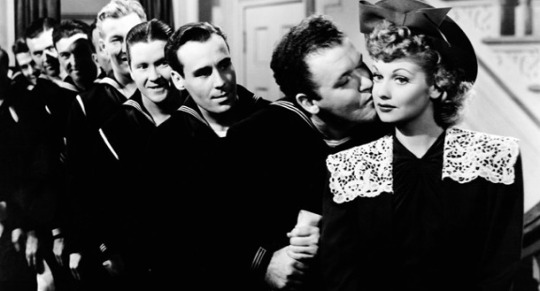
SAILORS
James Bush (Sailor Taking Address Book), Charles Flynn (Thin Sailor), Jack Lescoulie, George Ford, Art Rowlands, *Bernard Sell
HUSTLERS
Tom Quinn, Cyril Ring, Ralph Brooks
AT THE OPERA
Edward Peil Sr. (Assistant Manager), Eddie Arden (Opera Page Boy), Warren Ashe (Ticket Taker), Blue Washington (Doorman), Jimmy Cleary (Program Boy), Tom Costello (Floor Manager), William A. Boardway (Patron), Walter Byron (Patron), James Carlisle (Patron), Jean Fowler (Patron), Kenneth Gibson (Patron), Carl M. Leviness (Patron), John George (Newsboy Outside Opera House)
AT THE DANCE HALL
Carolyn Hughes (Girl), Charles Irwin (Emcee), Eddie Borden (Man), Eddie Hart (Ticket Taker #2), Dewey Robinson (Bouncer), Ronald R. Rondell (Ticket Taker)
AT THE MARRIAGE BUREAU & WEDDING CHAPEL
Wade Boteler (Uniformed Attendant), Homer Dickenson (Wedding Chapel Attendant), Harry "Snub" Pollard (Attendant), Wade Boteler (Uniformed Attendant), Fern Emmett (Middle-Aged Woman at Marriage Bureau), Henry Roquemore (Middle-Aged Man at Marriage Bureau), Effie Anderson (Marriage Bureau Clerk), Hal K. Dawson (Photographer)
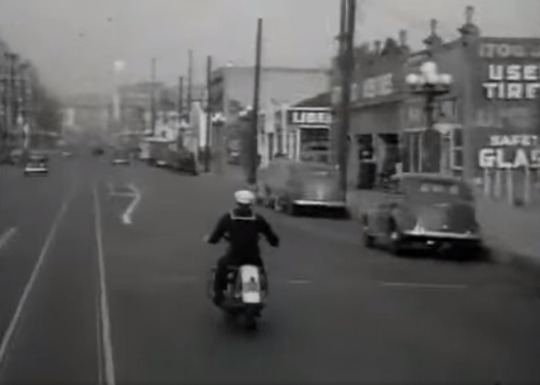
IN THE STREETS: PEDESTRIANS, BYSTANDERS, OBSERVERS
Mary Field (Woman on Street), Vince Barnett (Pedestrian), Leon Belasco (Taxi Driver), George Lloyd (Bystander Smoking Cigar), Joe Bernard (Tattoo Artist), George McKay (Joe - Counterman), Vince Barnett (Bystander with Packages), Victor Potel (Bystander Eating Popcorn), *Leon Belasco (First Taxi Driver), *Mike Lally (Second Taxi Driver), George Chandler (Bystander Betting Five Bucks), Irene Coleman (Bystander Watching Eddie Grow), Tom Coleman (Pedestrian), Andrew Tombes (Bus Conductor), Hal K. Dawson (Photographer), Edgar Dearing (Policeman), Fern Emmett (Middle-Aged Woman), Mary Field (Woman on Street), Bud Jamison (Tall Bystander), Tiny Jones (Passerby), Bert Moorhouse (Pedestrian), Bud Osborne (Bystander), Frank Mills (Laborer in Manhole), Andrew Tombes (Bus Conductor)
OTHERS
Sally Conlin (Little Girl)
Joe Geil (Boy)
Steve Pendleton (Mr. Adams)
Earle Hodgins (Sylvester P. Wurple)
Lloyd Ingraham (Announcer of Piano Winner)
Alex Pollard (Butler)
George Lollier (Grange's Chauffeur)
Alexander Pollard (Grange's Butler)
* actors who later did background work on Lucille Ball’s sitcoms.
3G TRIVIA
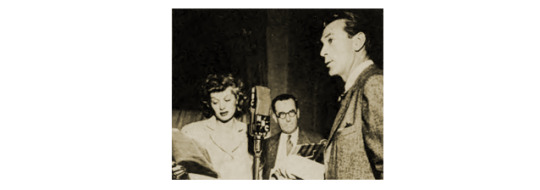
The film was dramatized for radio on “The Screen Guild Radio Theatre” on October 9, 1944, also starring Lucille Ball and George Murphy. They rerpised their roles on radio once again for “Old Gold Comedy Theatre” on February 11, 1945.

Maureen O'Hara was initially slated for the role played by Lucille Ball. Ball and O’Hara had done the 1940 film Dance, Girl, Dance together.
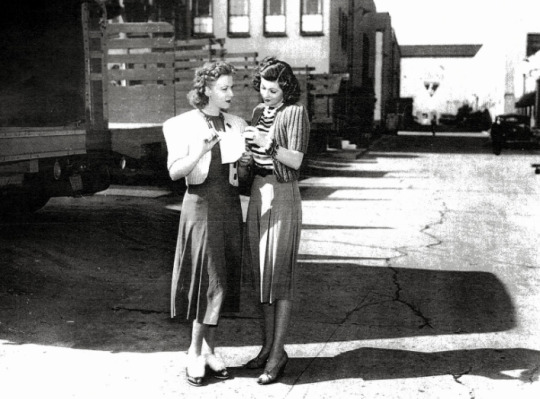
This film came towards the end of Lucille Ball's RKO days. She had already achieved leading lady status and would only make four more films for RKO before moving to MGM. She couldn’t know that she would one day own the studio with her husband, Desi Arnaz. Interestingly, RKO borrowed George Murphy from MGM for this film.
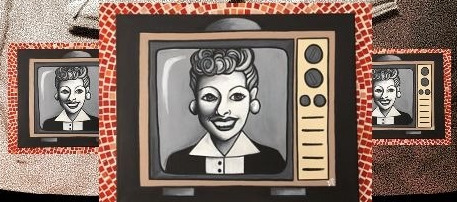
This film's earliest documented telecast took place in Altoona, Pennsylvania, on Sunday June 3, 1956 over TV station WFBG. That same week, Lucille Ball began filming season six of “I Love Lucy” in Hollywood.

In 1971, “The Carol Burnett Show” spoofed the film with “A Gob, a Girl and Her Galoshes".

The movie was referenced in the Emmy-winning documentary “Lucy and Desi: A Home Movie”.

#Lucille Ball#A Girl A Guy and a Gob#RKO#George Murphy#Edmond O'Brien#Irving Bacon#Henry Travers#Franklin Pangborn#Lloyd Corrigan#Mike Lally#Leon Belasco#1941
2 notes
·
View notes